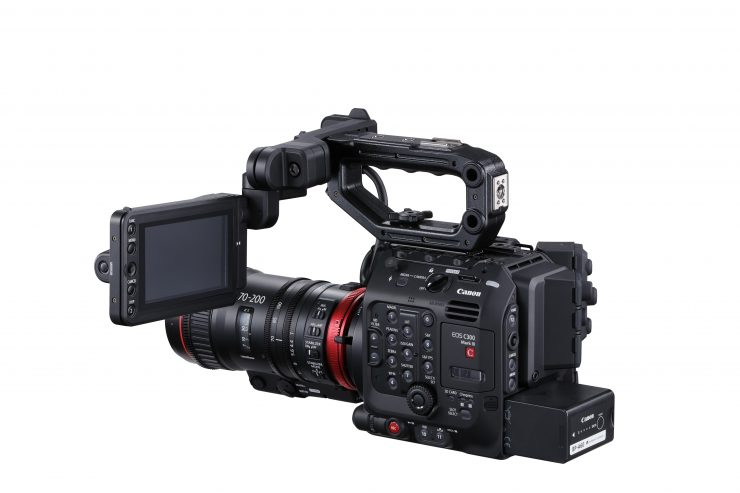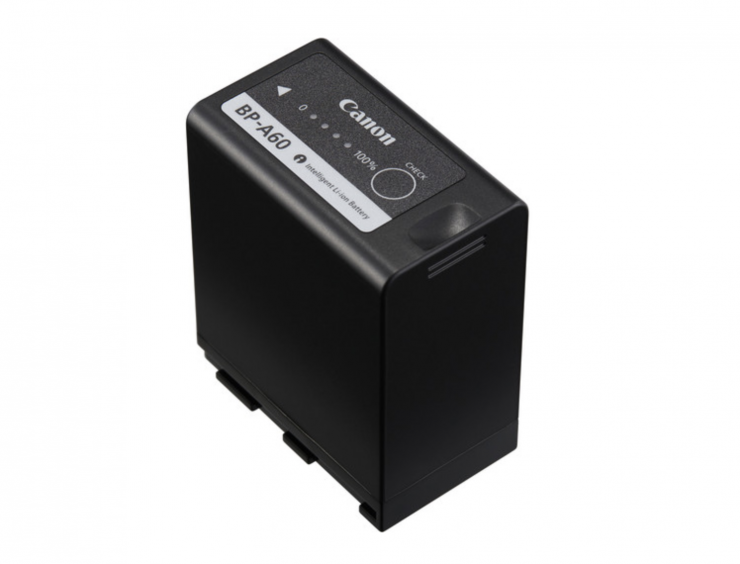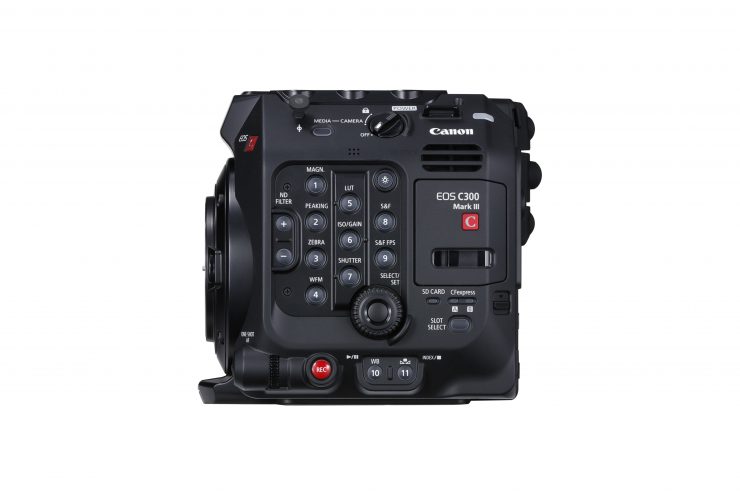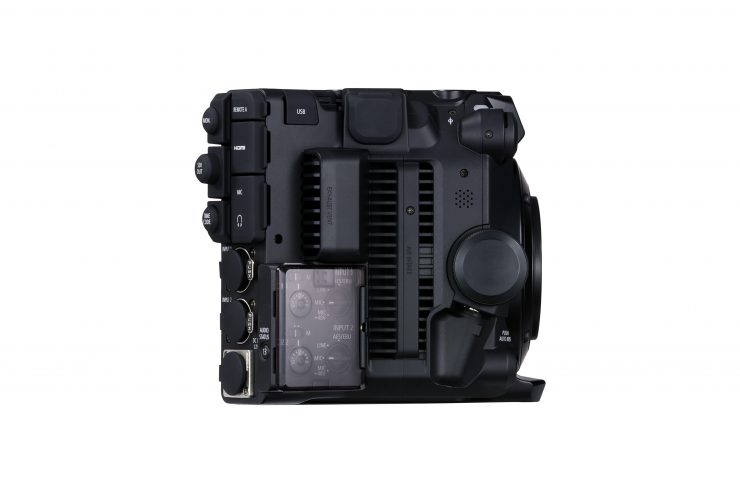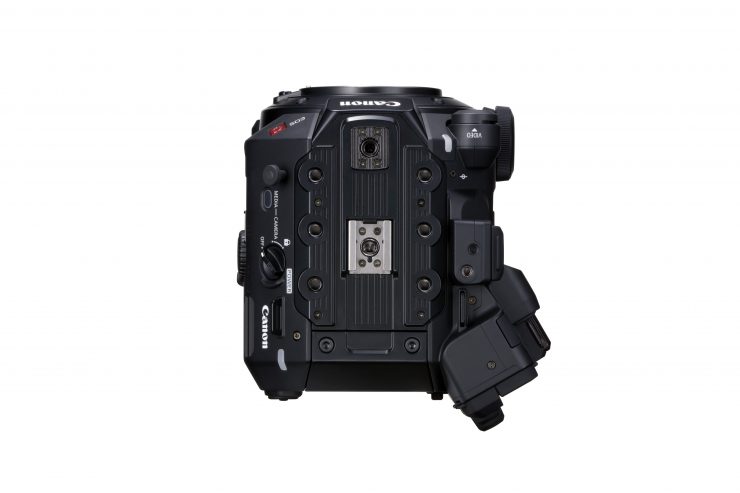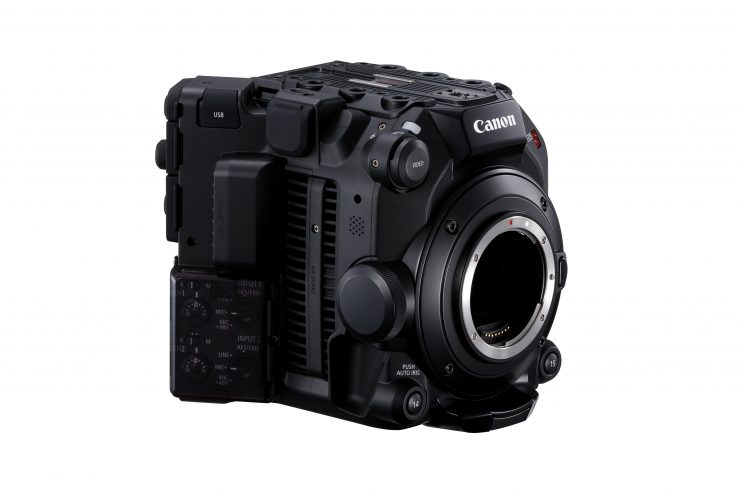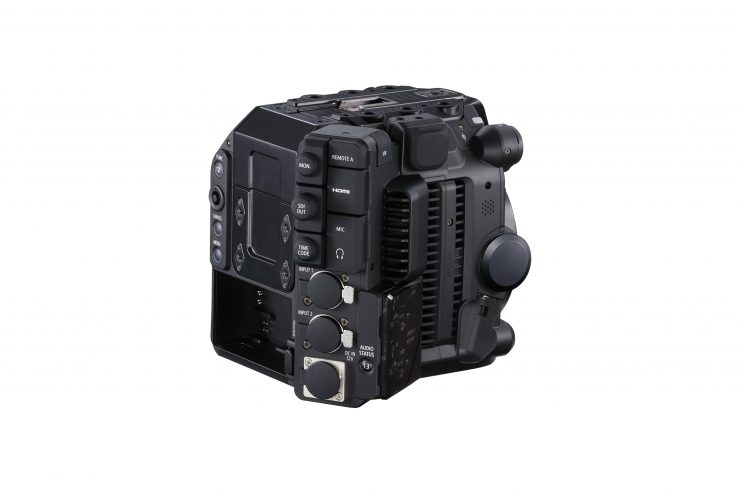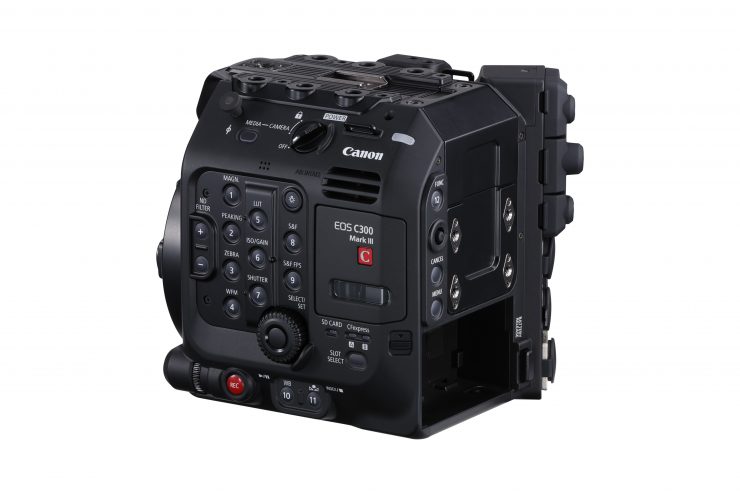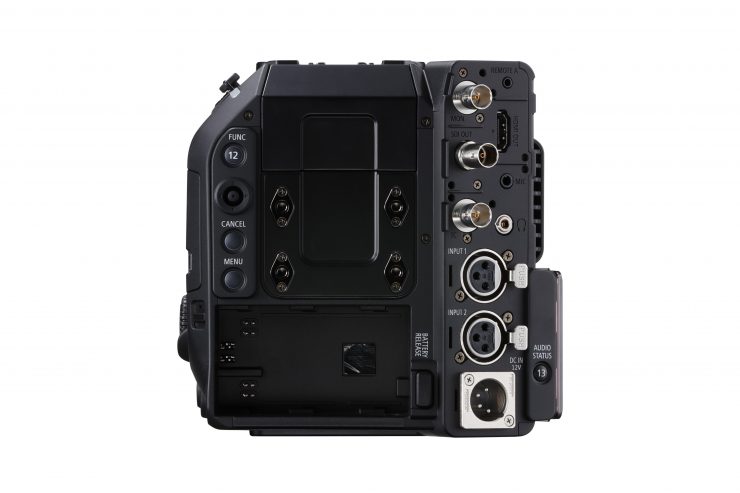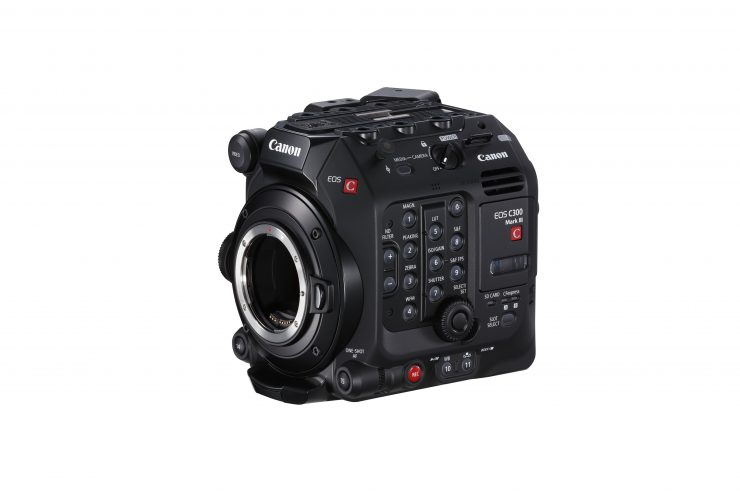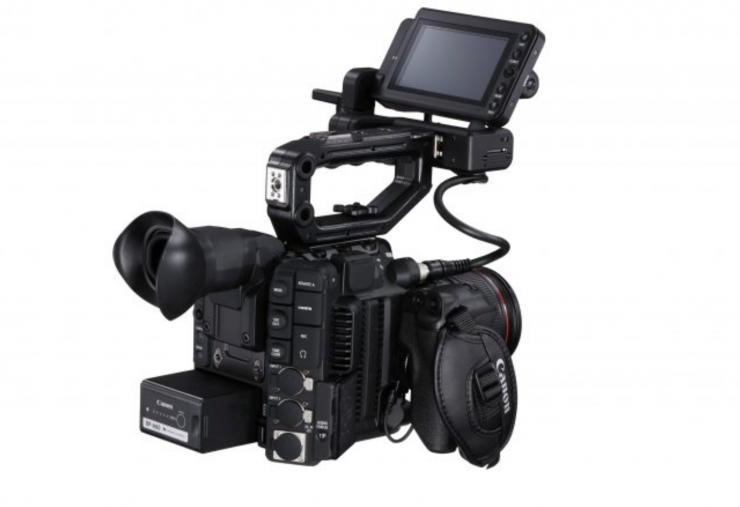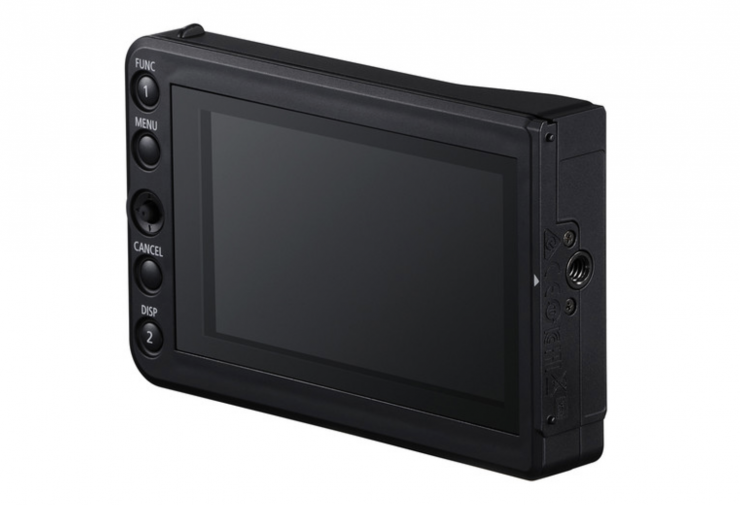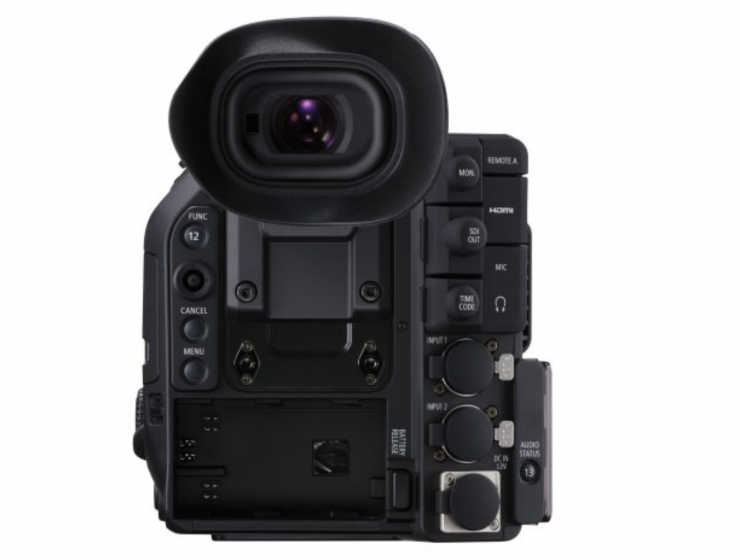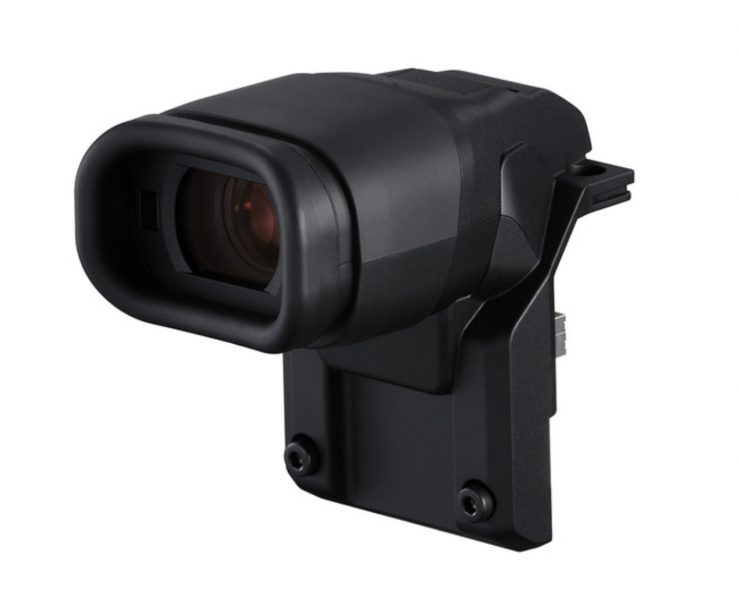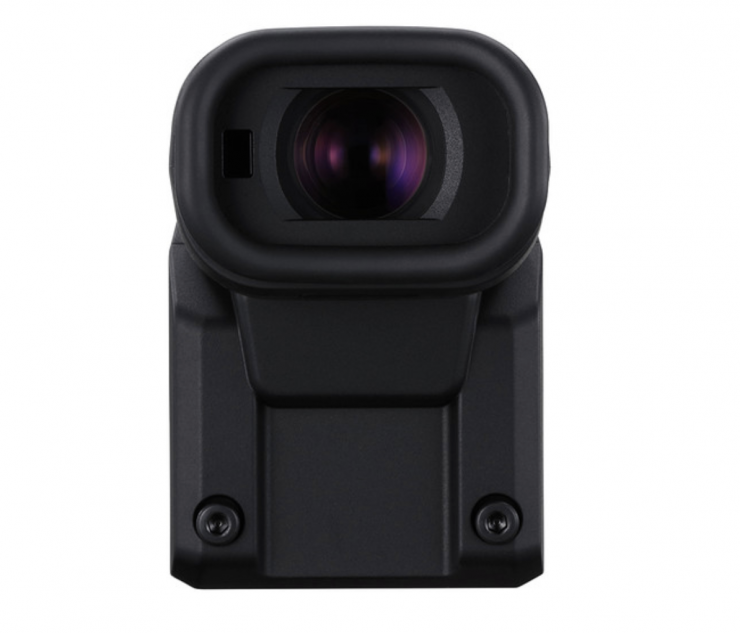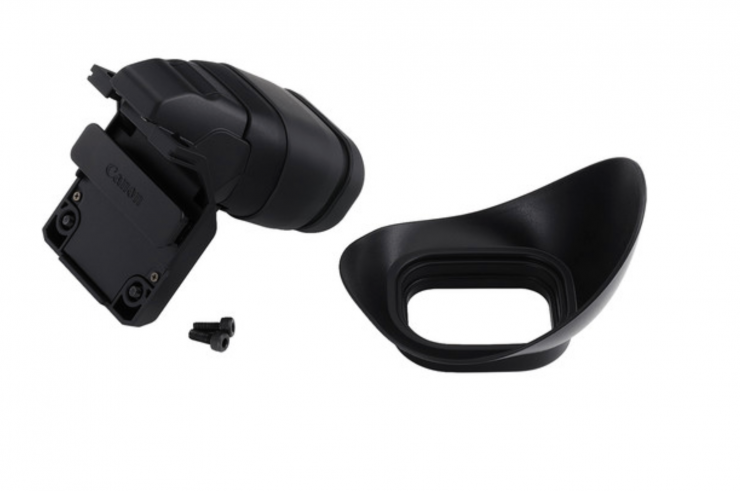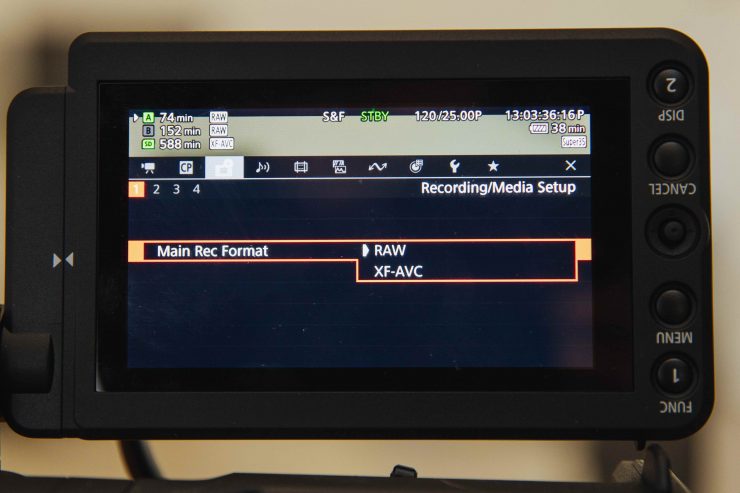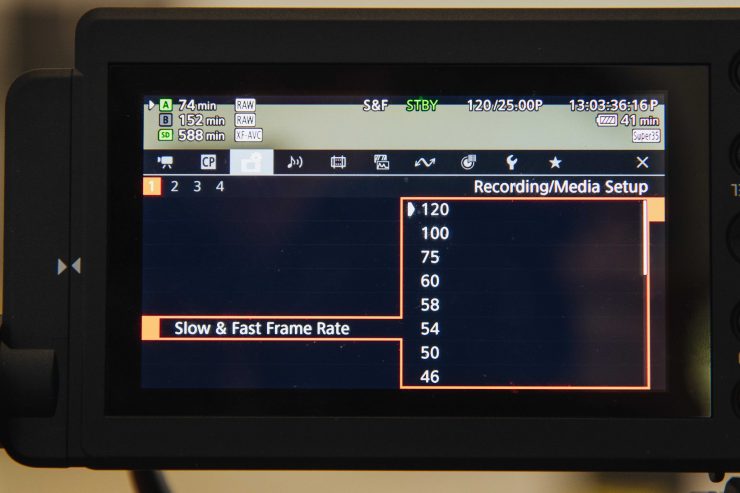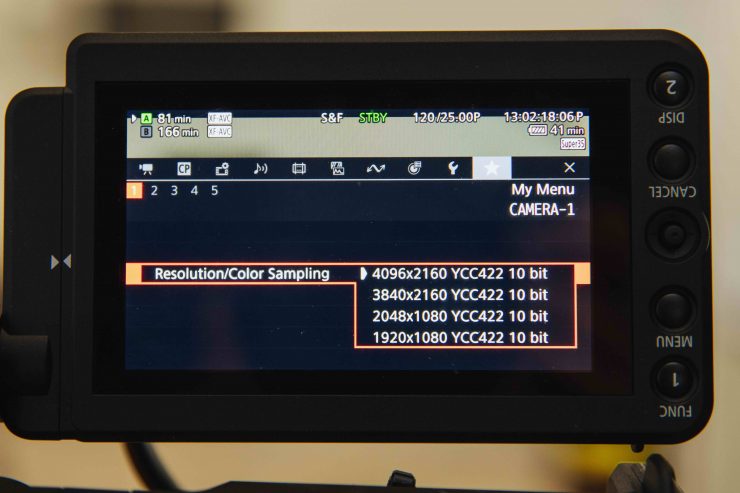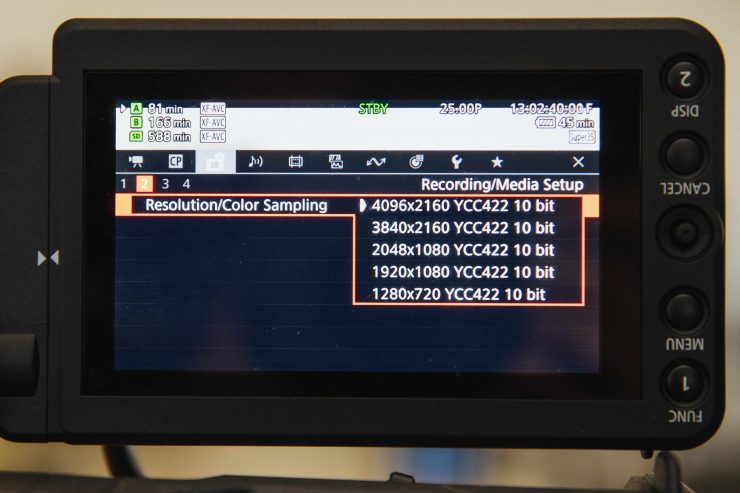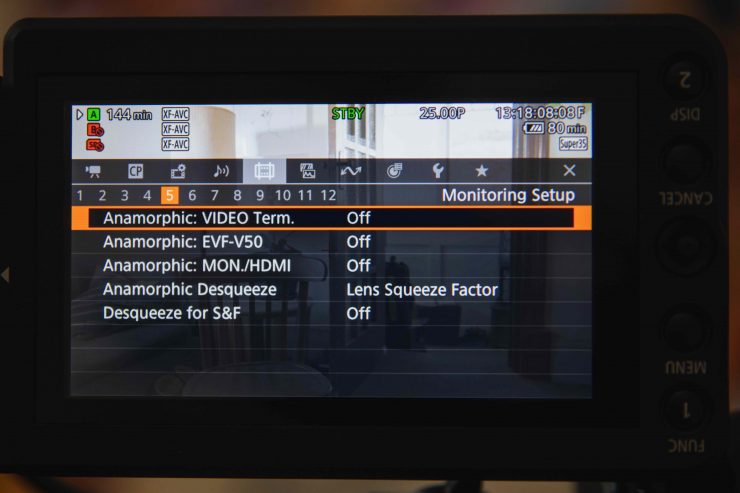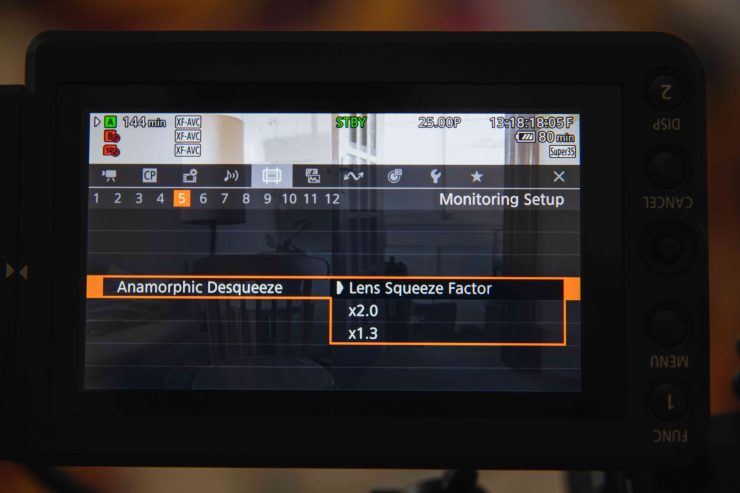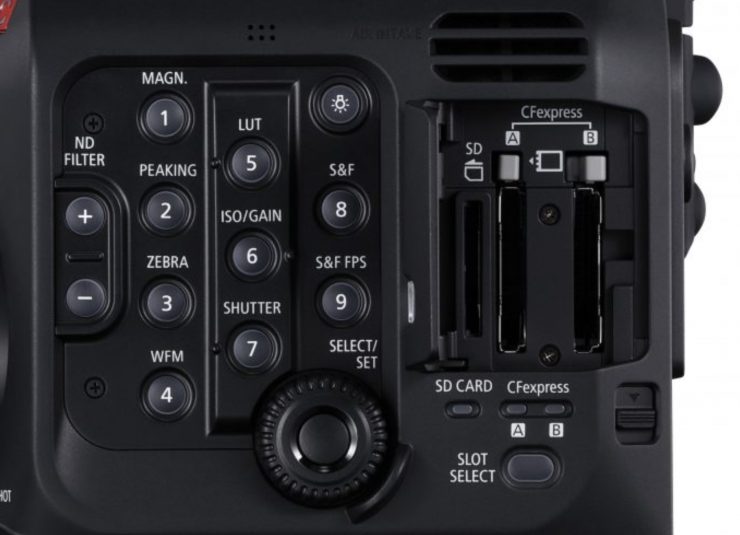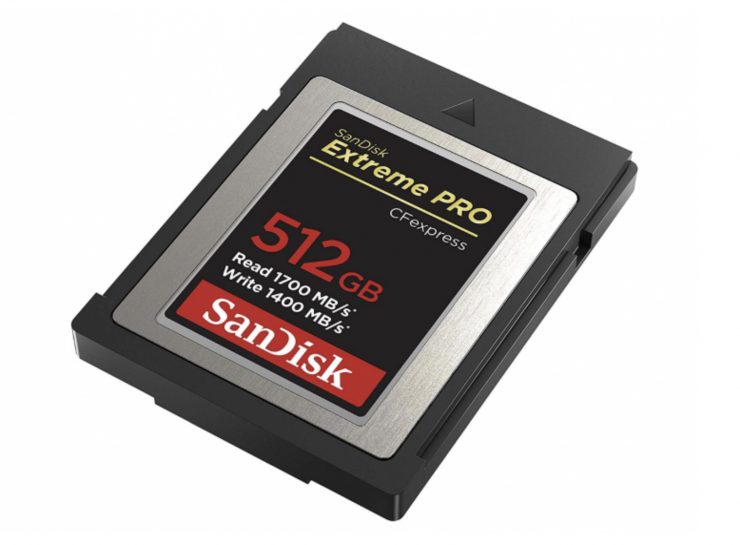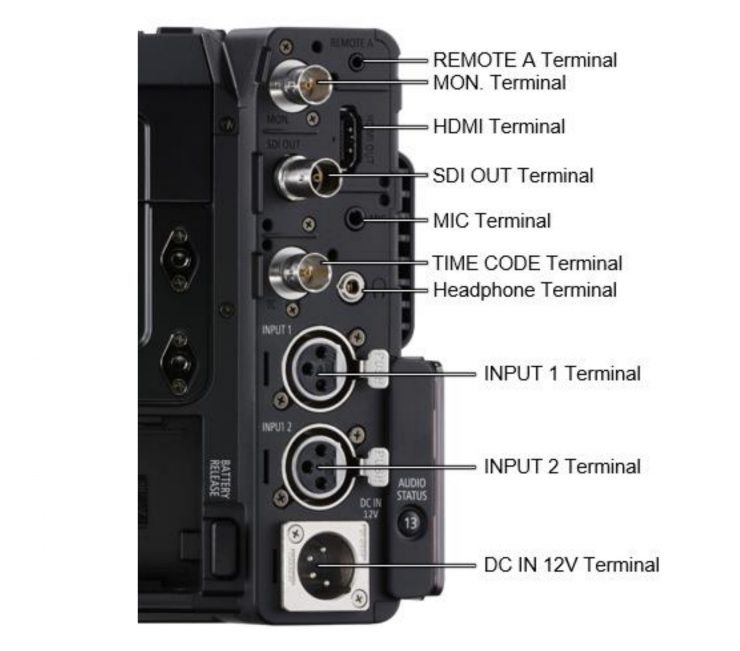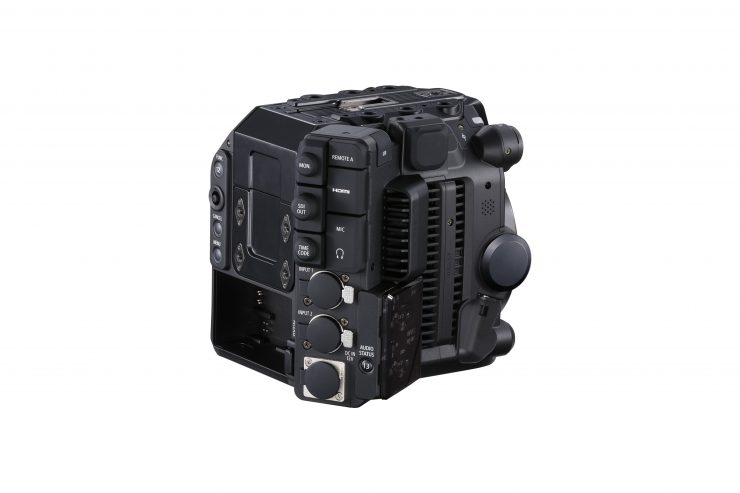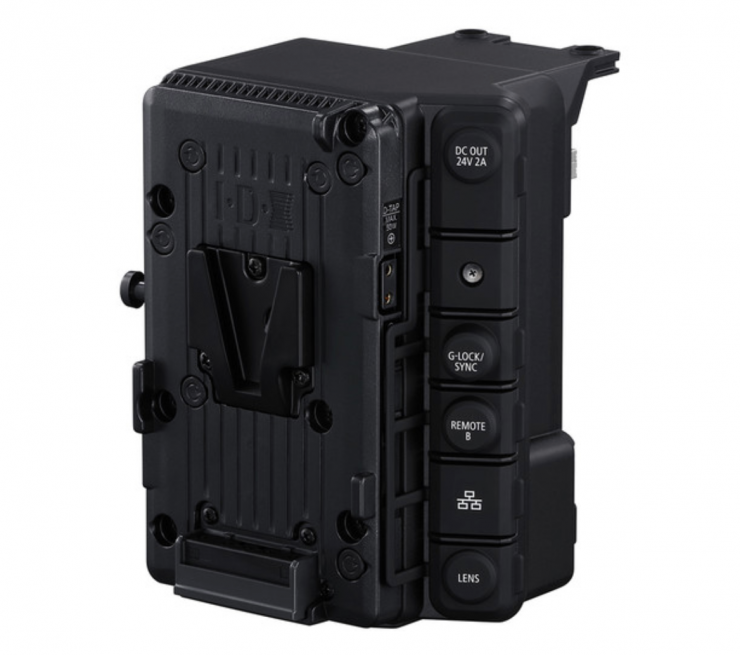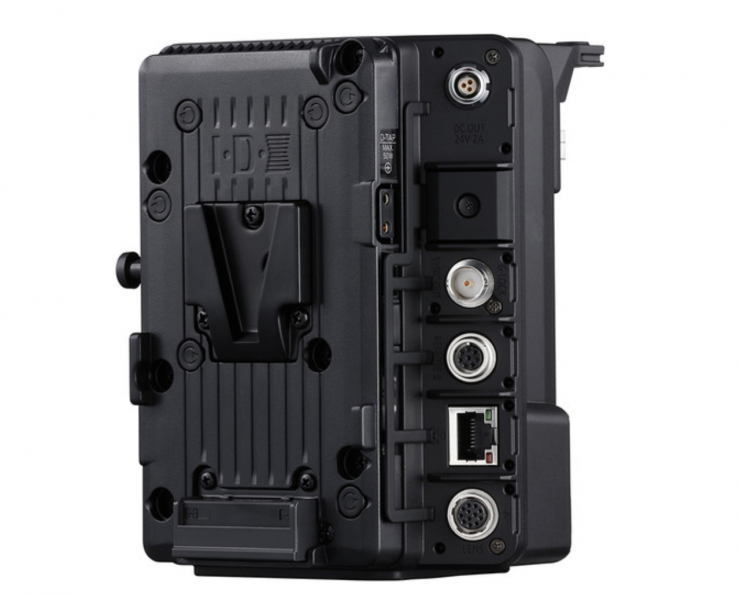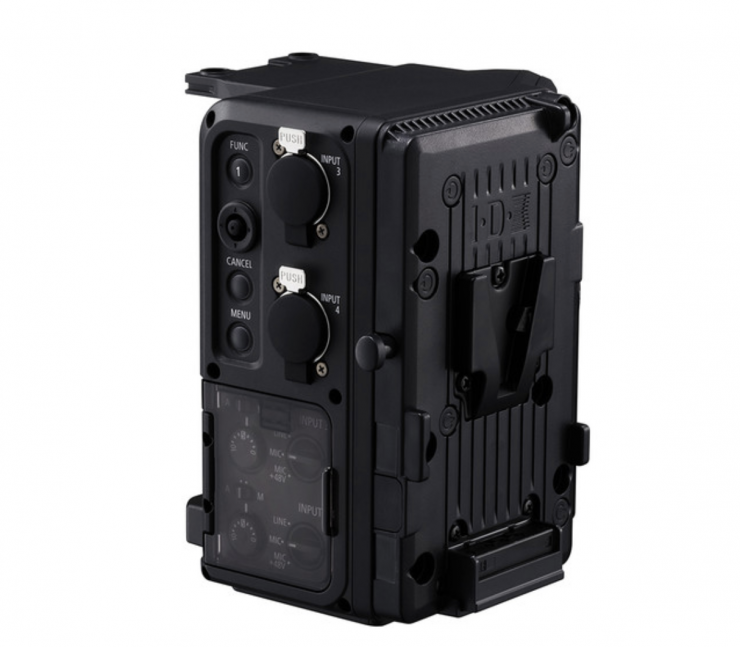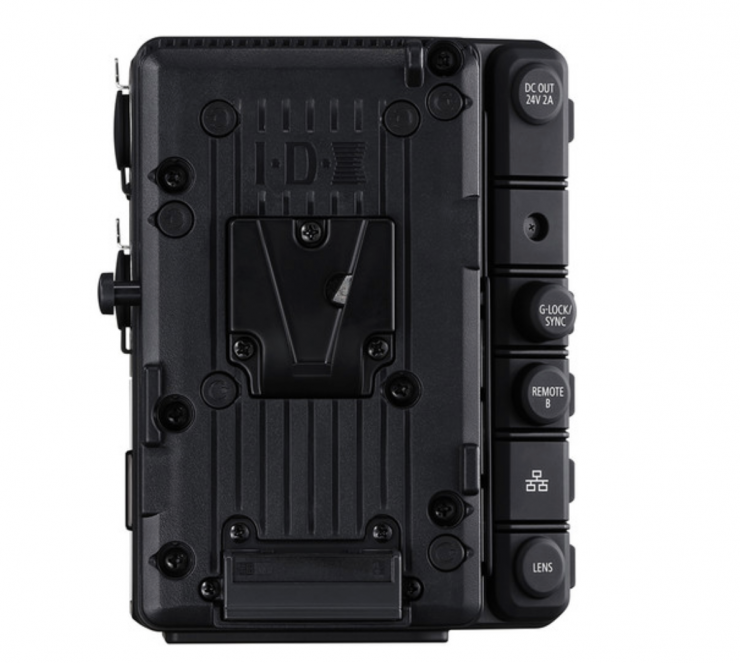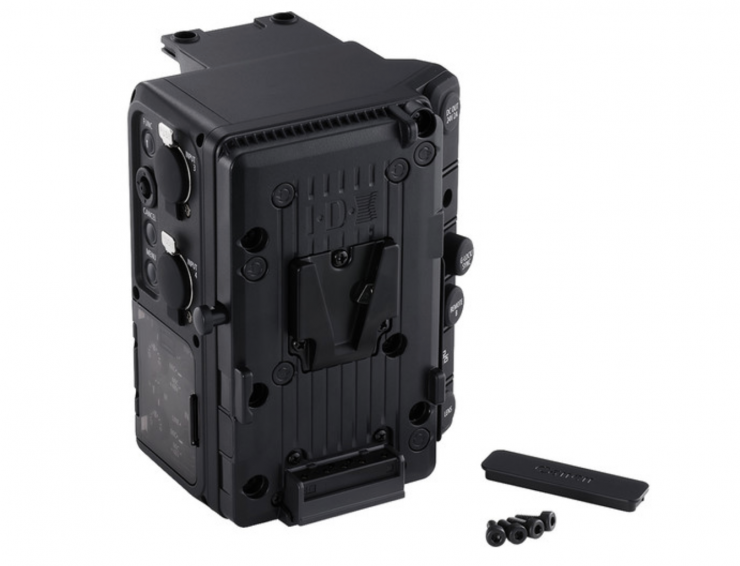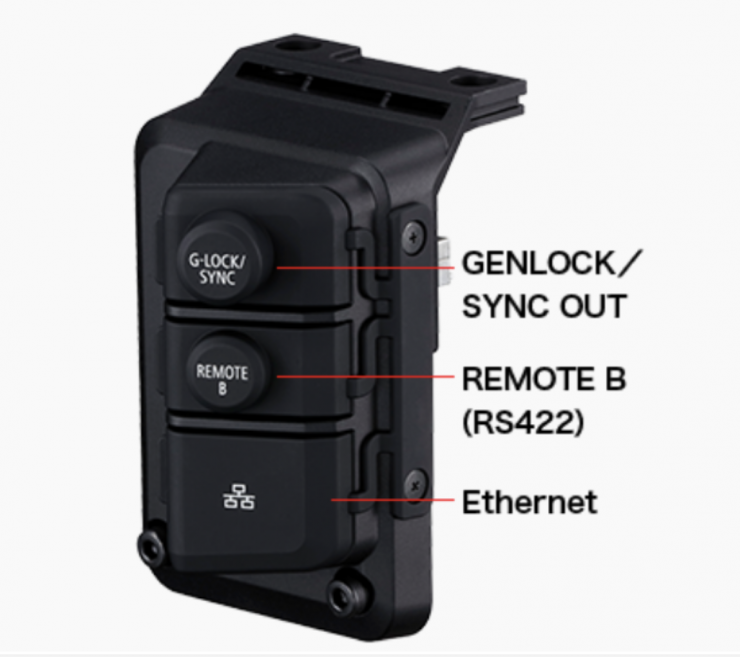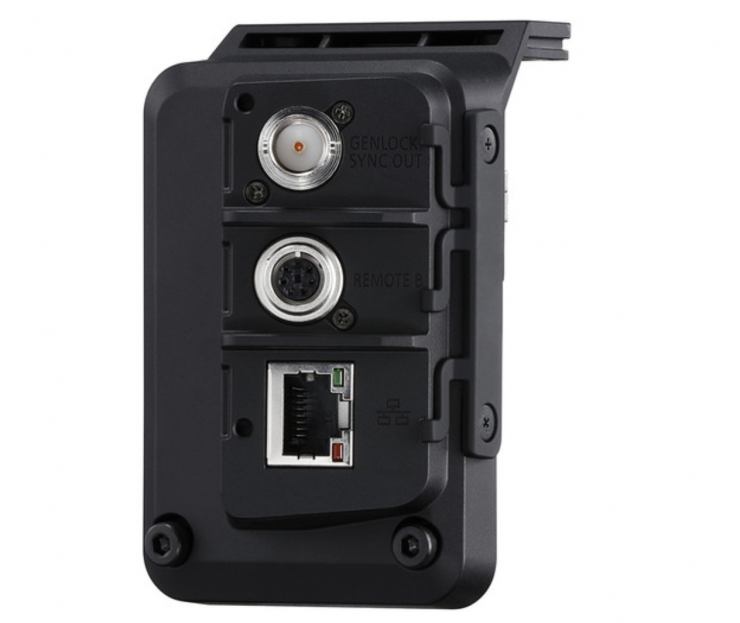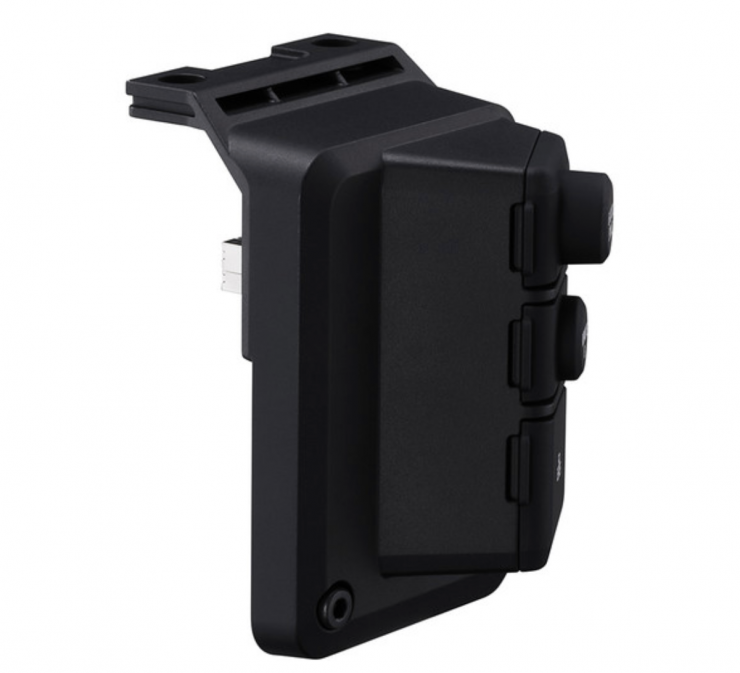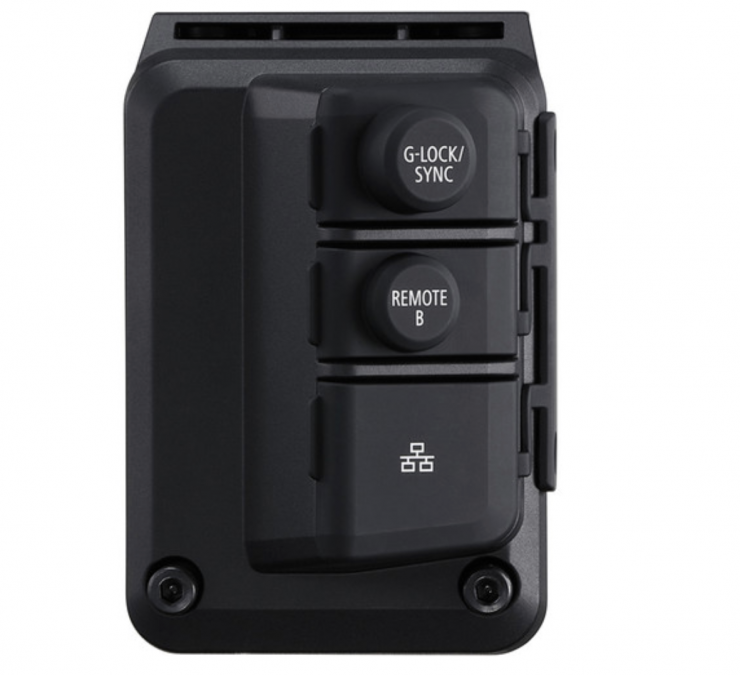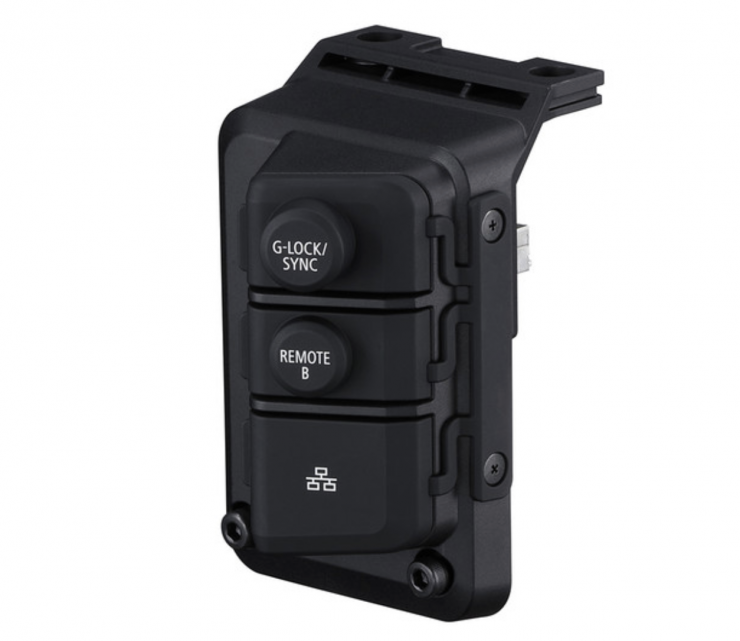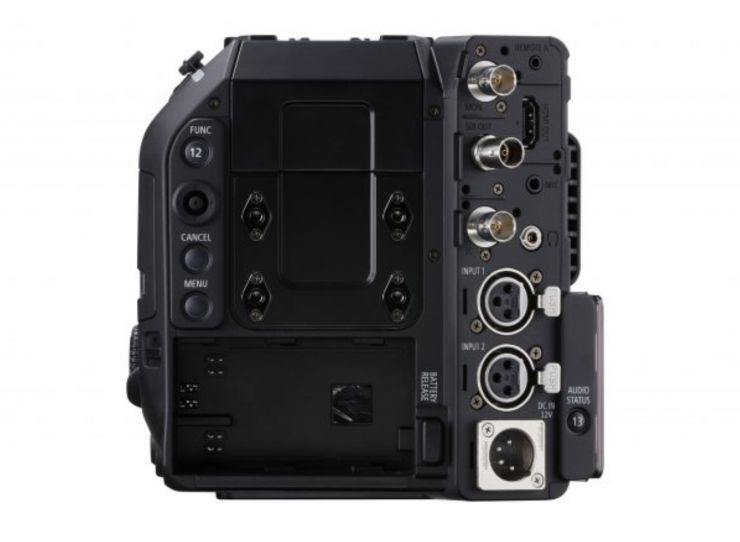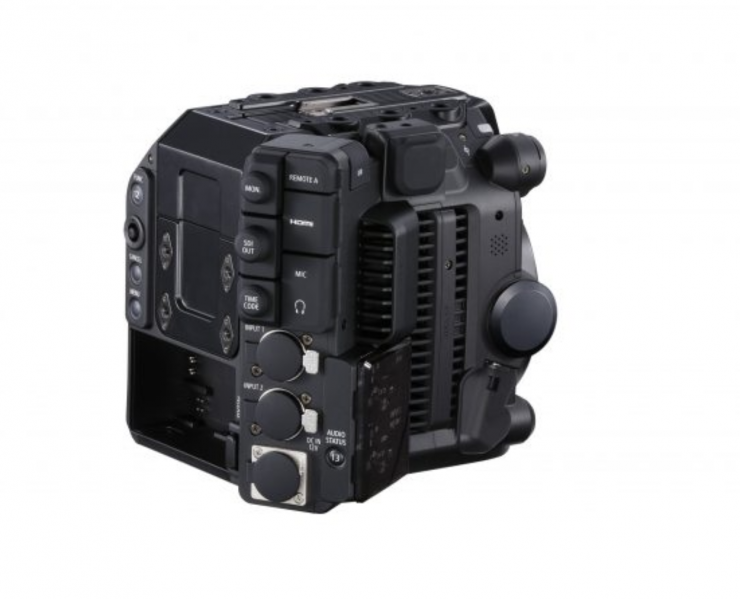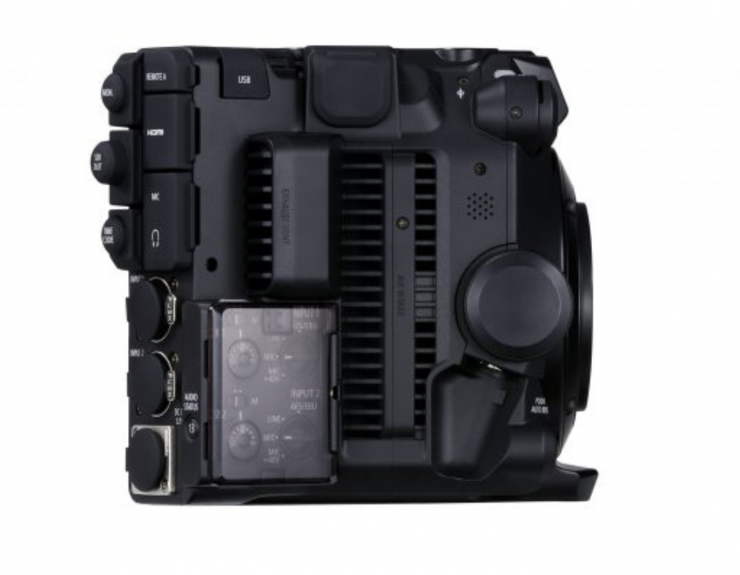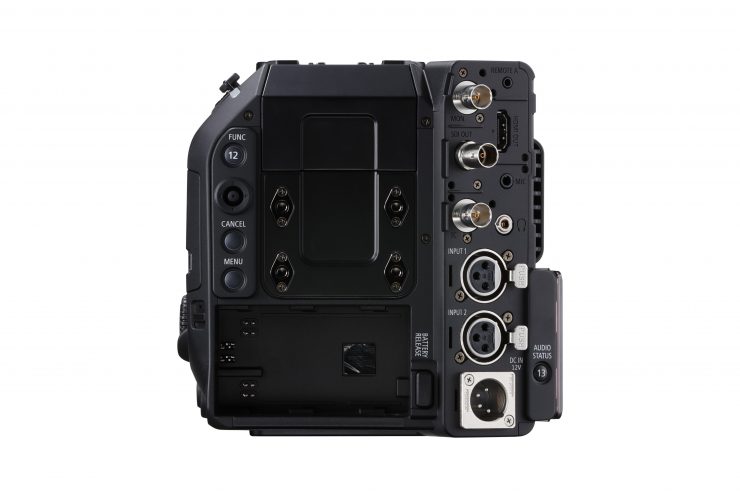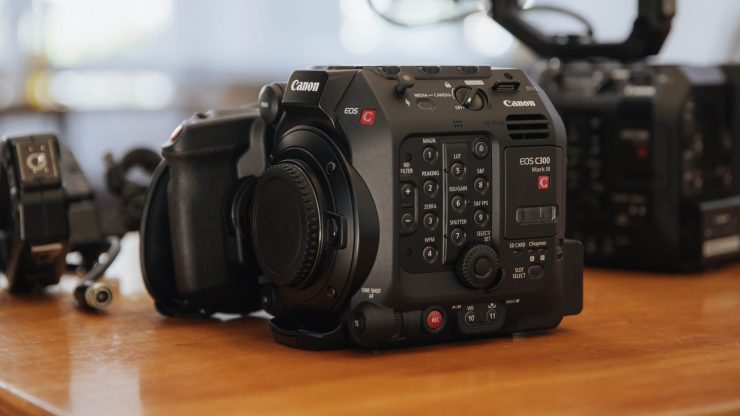
Canon has just announced the C300 Mark III, an S35 digital cinema camera that can record internally in 4K at up to 120p in either RAW or XF-AVC 4:2:2 10-Bit.
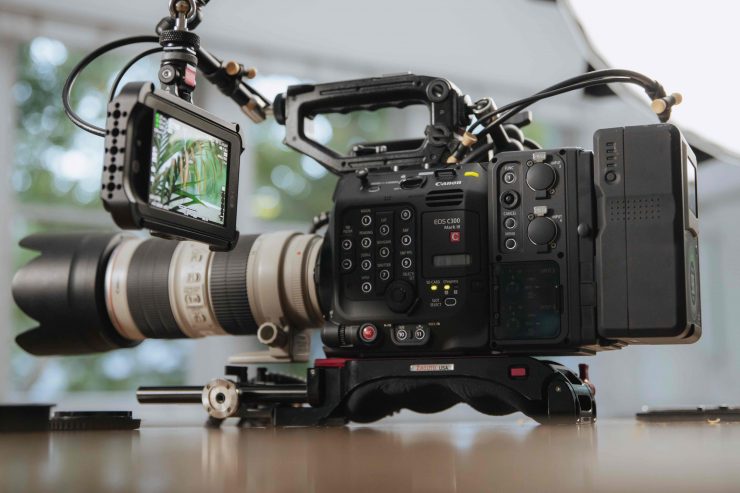
At first glance, you may just think that the EOS C300 Mark III is an S35 version of the C500 Mark II without the ability to record in resolutions above 4K, but there is a lot more to the camera than meets the eye.
We also have another article with a hands-on look and footage from filmmaker Dave May, so please make sure you check that out too.
C300 Mark III Key features
- 4K up to 120p
- Newly developed S35 4K CMOS Dual Gain Output sensor
- DIGIC DV 7 Image Processor
- 16+ stops of DR (claimed)
- 5-axis sensor stabilization
- Cinema RAW Lite (Internal Recording)
- XF-AVC (H.264)
- XAVC Long GOP
- 4:2:2 10-bit
- 2K 180p (sensor crop)
- Modular design
- User-changeable Lens Mounts (EF, Locking EF, PL)
- EF, PL, anamorphic and Spherical Lens Support
- 4.3″ LCD Monitor LM-V2 with Touch Focus
- Dual Pixel CMOS AF with Touch AF and Face Detection AF
- Rear audio/power module
- Internal ND filters (clear, 2, 4, 6, 8, 10 stop – 8 & 10 with extension)
- 4 channels of XLR with optional module
- 12G-SDI, 3G-SDI
- 2x CF Express slots
- 1x SD card slot
If you want to download the full specifications of the camera you can do so above.
All-new sensor
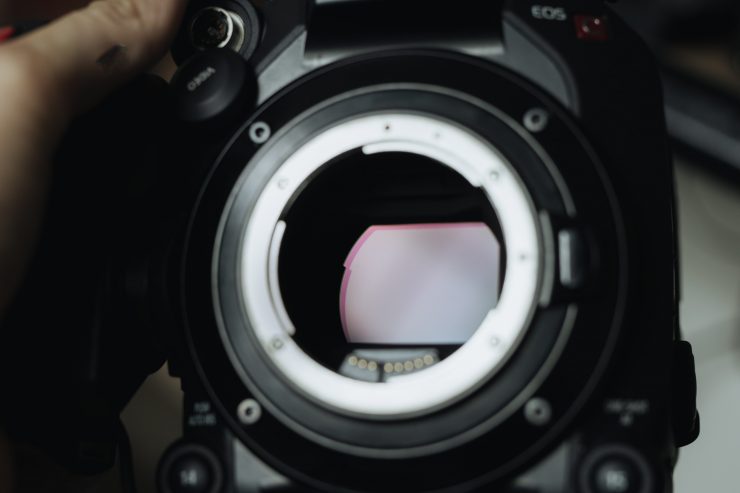
The C300 Mark III uses a brand new S35 sensor that has not been seen in any previous Cinema EOS camera. The new sensor uses a Dual Gain Output (DGO) which I will talk about in-depth in the next section.
The sensor has a physical size of 26.2 x 13.8 mm (29.6 mm on the diagonal. This makes it very similar in size to the sensor that is used in the C300 Mark II.
- Total Pixels- Approx. 9.6 Megapixels (4206 x 2280)
- Effective Pixels- Approx. 8.85 Megapixels (4096 x 2160)
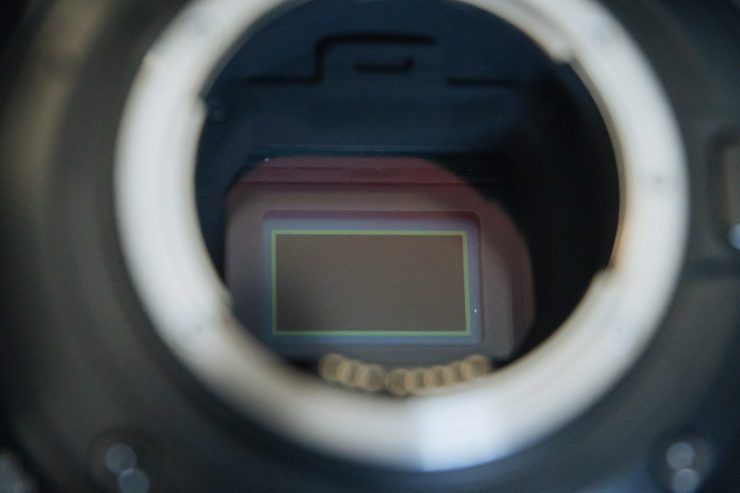
C300 Mark III 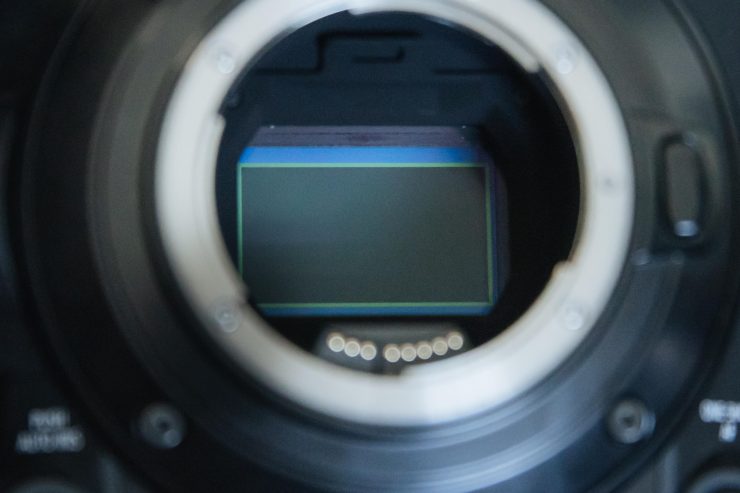
C500 Mark II
Above you can see the difference in the physical sizes of the C300 Mark III and C500 Mark II sensors.
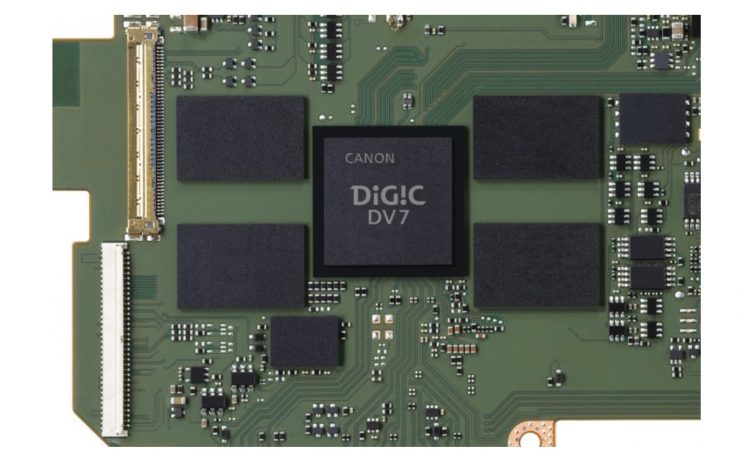
The sensor also uses the newer Digic DV 7 processor, the same one that can be found in the C500 Mark II.
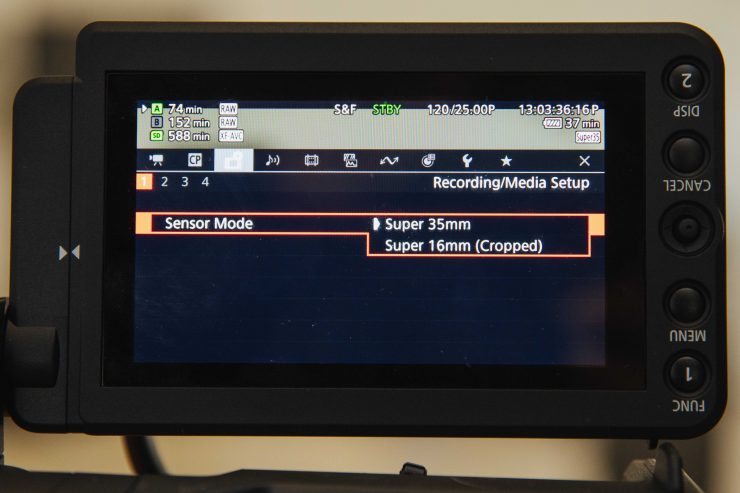
The sensor can operate in two different modes:
- Super 35mm
- Super 16mm (crop)
Here are the various crop factors when shooting in different resolutions:
- 4K Super 35mm: 1.46x
- UHD Super 35mm: 1.53x
- 2K Super 16mm (cropped): 2.92x
- HD Super 16mm (cropped): 3.07x
What is very important in the EOS C300 Mark III is that the construction of the red, green, and blue components entails no algorithmic debayering processes. A unique parallel readout process within the image sensor separately extracts the four individual components, including the two spatially offset green components (green has twice as many spatial samples as the red and blue components). This innovative approach totally avoids any of the reconstruction errors inevitably associated with algorithmic debayering and this forms the basis for a clean artefact-free final recorded image.
The C300 Mark II, in my opinion, has a very soft looking 4K image and that is probably due to the fact that it uses a 24.6 x 13.8 mm (Super35) sensor that has a sensor resolution of:
- Actual: 4206 x 2340 (9.84 MP)
- Effective: 4096 x 2160 (8.85 MP)
This meant that the camera wasn’t able to do any sort of oversampling when recording in 4K. This is exactly the same as the C300 Mark III.
With the C500 Mark II, the camera uses an oversampling process from the 5.9K image capture to produce 4K (DCI or UHD). Canon claims that this enhances image sharpness, curtailed moire, and produces a lowered visibility of noise at the higher ISO settings. Canon states the image will be sharper with better detail and will resolve color better when shooting in 2K, and HD. Just to be clear, anytime you select the full-frame shooting mode on the EOS C500 Mark II and you are recording XF-AVC you are oversampling the 5.9K sensor.
DGO (Dual Gain Output)
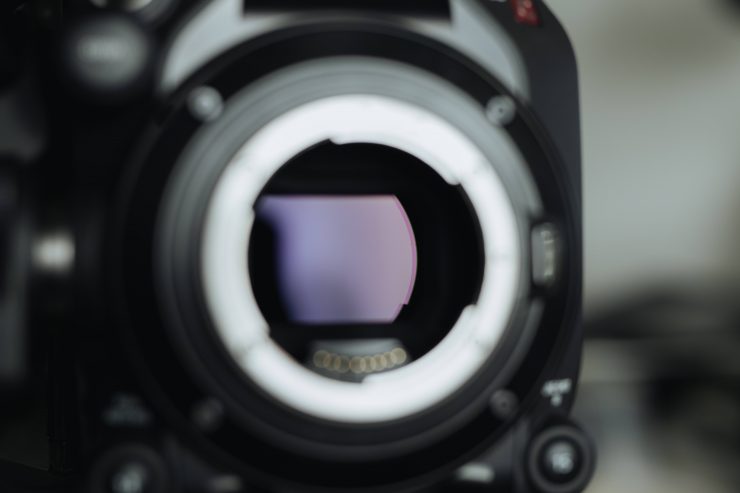
Canon has incorporated what they refer to as DGO (Dual gain Output) into the C300 Mark III. Essentially this is very similar to what ARRI does with the ALEXA. Dual Gain sensor architecture has been used by ARRI in their Alev III sensors for more than 10 years.
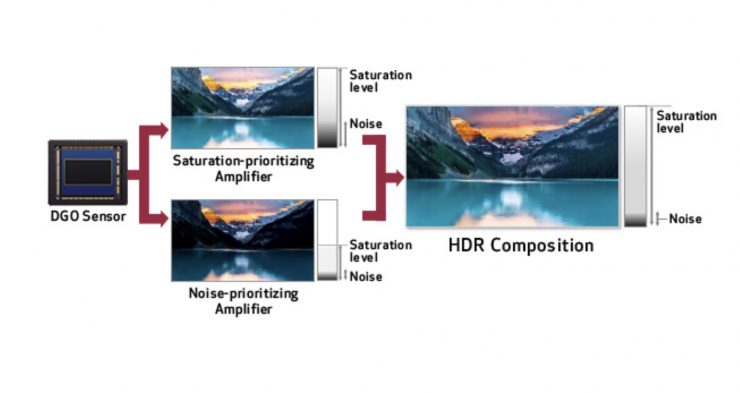
According to Canon, the DGO sensor produces images optimized for HDR by creating two images. One prioritizes highlights and the other prioritizes shadows and dark areas. Canon goes on to say that this new sensor is capable of 16+ stops of dynamic range with reduced noise in the shadows and improved low light performance. You are probably not going to notice a massive increase in dynamic range if you are still finishing in SDR. It is with HDR that DGO will be noticeable.
Noise is also claimed to be greatly reduced because the Dual Gain Output signal is taken directly from the sensor and before any image processing takes place.
16+ stops of dynamic range is a very bold claim. If in fact, the camera does have 16+ stops of actual dynamic range that would give it the most dynamic range of any camera on the market. Of course, what is more important is where that dynamic range is being allocated.
The DGO works across all ISO ranges on the camera. Canon says that the most dynamic range (16+ stops) can be achieved when shooting at 800 ISO in Canon Log 2. If you shoot in Canon Log 3 then the dynamic range drops to 14 stops. From what I have seen, if you move off the cameras native ISO the DGO isn’t as effective when shooting at higher ISO levels. It also appears that the extra dynamic range you are getting on the camera is coming below middle grey. There doesn’t seem to be any dynamic range improvement in the highlights if you compare the camera to the C500 Mark II.
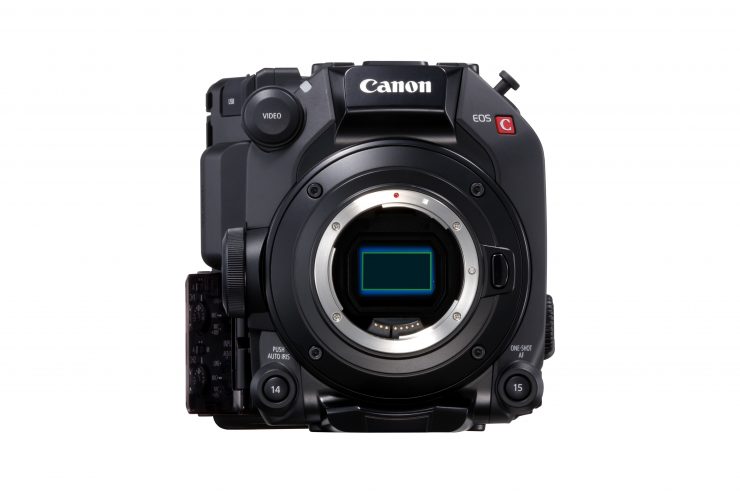
Now, there is a catch with this Dual gain Output system. It doesn’t work when you are shooting in frame rates above 60p in S35 4K. However, it does work when you are shooting in 2K Super 16mm Crop mode up to 112fps. This is not surprising because the amount of processing power to deal with two readouts at high resolutions and high frame rates would put a proportionally bigger load on the system. With a power draw of just 31W Canon probably had to make a trade-off with how the Dual Gain Output works in the camera. There is a reason ARRI cameras have a high power consumption!
From what I can gather, Canon’s DGO is very similar to what ARRI has been doing for years.
This is how ARRI describes how Dual Gain Output works: The Dual Gain Output simultaneously provides two separate read-out paths from each pixel with different amplification. The first path contains the regular, highly amplified signal. The second path contains a signal with lower amplification to capture the information that is clipped in the first path. Both paths feed into the camera’s A/D converters. These images are then combined into a single high dynamic range image. This method is said to enhance low light performance and prevent the highlights from being clipped, thereby significantly extending the dynamic range of the image.
You shouldn’t confuse Dual Gain Output with Dual Base ISO. Although it’s the same basic idea of having different readout calibrations, Dual Gain Output is much harder to do than Dual Gain ISO because that switches between the two. What ARRI and Canon are doing requires there to be a dual readout on every frame and then processing all of that on every frame.
Unlike Canon, ARRI is able to use Dual Gain Output on all frame rates. If you want to know why cameras such as the new ALEXA Mini LF don’t have high frame rates I would imagine that it is because they want the Dual Gain Output to work in every mode on their cameras. If they tried to push the frame rates on a larger sensor camera like the Mini LF it would presumably mean that the Dual Gain Output wouldn’t have been able to work.
It is interesting to see that the C300 Mark III is the first Canon camera to use a Dual Gain Output sensor. You would have thought the C500 Mark II would have got it first. I asked a Canon spokesperson whether there was a technical limitation with trying to use DGO on a full-frame sensor and they told me that because of the processing requirements when using DGO it is a lot harder to do on a larger sensor.
DGO is probably something we are going to see being used in future Canon sensors.
It is important to note that the DGO can’t be turned on or off.
Low Power Draw
The C300 Mark III draws just 31W and this is primarily because of the Dual Gain Output sensor. Less power consumption means less heat is being produced. Less heat being produced means less image noise, which should equate to better low light performance.
According to Canon, you can continuously record 130 minutes of Cinema RAW Light (1Gbps) when using a single BP-A60 battery.
The power draw of the C300 Mark III (31W) is less than half that of the C500 Mark II (63W). As another comparison, the Sony FX9 draws 35.2W.
This low power draw is a big deal if you are shooting documentaries, events or news. Given this low power draw, there is probably little reason to run a larger V-lock battery on this camera.
Same body, same design as the C500 Mark II
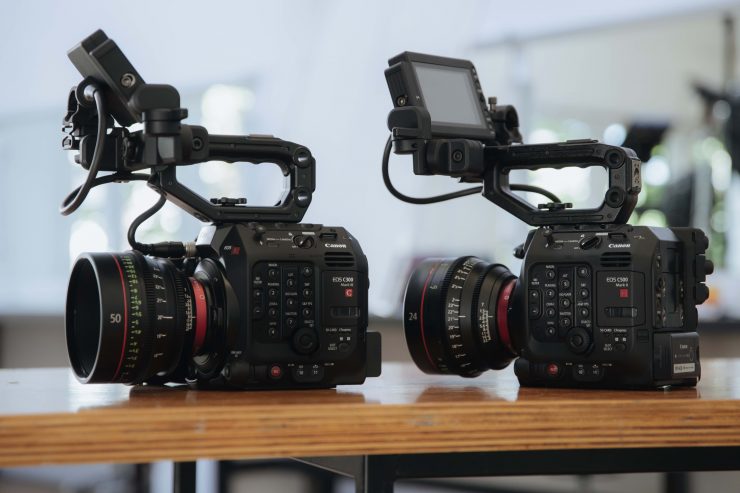
The C300 Mark III is identical to the C500 Mark II and you would struggle to tell which camera is which when they are sitting side by side.
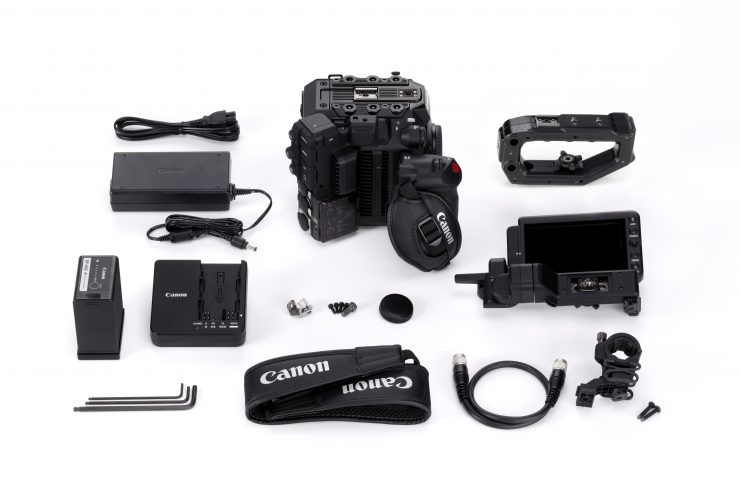
It makes a lot of sense going with the same exact body for both cameras, as you can share accessories between the two models.
By using the exact same body and same accessories as the C500 Mark II Canon would have significantly saved on development and manufacturing costs. This is exactly what Sony did with the F5 and F55.
Given that both the C500 Mark II and C300 Mark III share the exact same body, it is no surprise that they both weight 1.77 kg (3.9 lb). Both cameras have physical dimensions of (W x H x D) 6.0 x 5.8 x 6.6″. (153 x 148 x 168mm). At 3.9 lb they are only marginally heavier than the EOS C200 (3.2 lb).
The camera can be customized to be quite small or quite large depending on what you are doing.
“Form factor has been key to the success of the Cinema EOS line since the original C300. Therefore, it was of ultimate importance for the engineers to maintain that philosophy with this new product, while also considering feedback from Cinema EOS users. This balance shows itself in the all new modular design of this camera. It starts off looking like previous models, but then users have the ability to customize it to suit their needs, which has never before been available in a Canon camera. We made sure to keep certain measurements the same, in order for users to be able to continue to use certain Cinema EOS and third party accessories that they’ve grown to rely on. In the end, we are confident the design of the C300 Mark III will please both seasoned Cinema EOS users and newcomers alike.”
Canon
Same but different
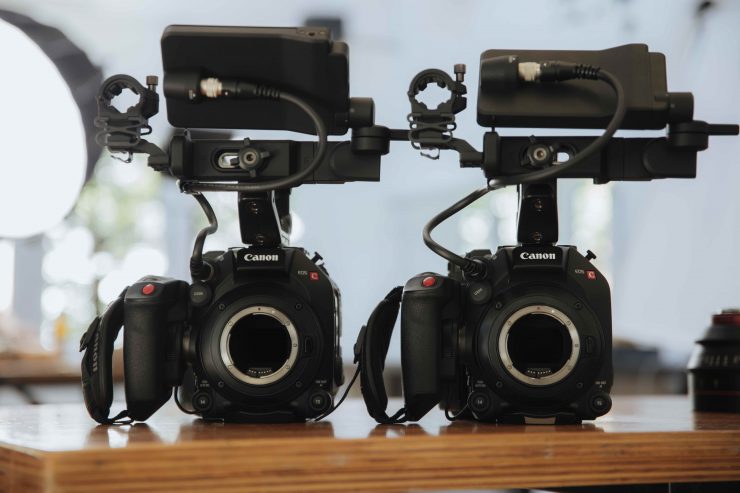
Even though it shares the exact same body and accessories as the C500 Mark II, there are significant differences under the hood. Below is a comparison between the two cameras:
| Canon C300 Mark III | CANON C500 Mark II | |
| Sensor | Super 35mm 4K Dual Gain Output CMOS sensor (9.6 MP) 4206 x 2280 | Full Frame 6062 x 3432 (20.8 MP) CMOS sensor |
| Dynamic Range (Claimed) | 16+ stops | 15 stops |
| Internal RAW Recording | Cinema Raw Light 10/12-bit 4096 x 2160 2048 x 1080 (cropped) | Cinema Raw Light 10/12-bit 5952 x 3140 4096 x 2160 (cropped) 2048 x 1080 (cropped) |
| Internal Recording | XF-AVC 4:2:2 10-bit 4K (4096 x 2160) 23.98/24/25/29.97/50/ 59.94/100/119.98 UHD (3840 x 2160) 23.98/24/25/29.97/50/ 59.94/100/119.98 2K 2049 x 1080) 23.98/24/25/29.97/50/ 59.94/100/119.98/180 HD (1920 x 1080) 23.98/24/25/29.97/50/ 59.94/100/119.98/180 XF-AVC (Long GOP) 4K (4096 x 2160) 23.98/24/25/29.97/50/ 59.94/100/119.98 UHD (3840 x 2160) 23.98/24/25/29.97/50/ 59.94/100/119.98 2K 2049 x 1080) 23.98/24/25/29.97/50/ 59.94/100/119.98/180 HD (1920 x 1080) 23.98/24/25/29.97/50/ 59.94/100/119.98/180 XF-AVC (Long GOP) Proxy 4:2:0 8-bit 2K (2049 x 1080) 23.98/24/25/29.97/50/ 59.94/100/119.98/180 (35 Mbps) HD (1920 x 1080) 23.98/24/25/29.97/50/ 59.94/100/119.98/180 (24 Mbps) 1280 x 720 23.98/24/25/29.97/50/ 59.94/100/119.98/180 (17 Mbps) | XF-AVC 4:2:2 10-Bit 4K (4096 x 2160) 23.98/24/25/29.97/50/59.94 UHD (3840 x 2160) 23.98/24/25/29.97/50/ 59.94 2K 2049 x 1080) 23.98/24/25/29.97/50/ 59.94/100/119.98 HD (1920 x 1080) 23.98/24/25/29.97/50/ 59.94/100/119.98 XF-AVC 4:2:0 8-Bit 2K (2048 x 1080) 23.98/24/25/29.97/50/59.94 (24 to 35 Mb/s) |
| Auto Focus | Dual Pixel CMOS AF | Dual Pixel CMOS AF |
| Image stabilization | EIS | EIS |
| Lens Mount | Canon Locking EF PL and regular EF available | Canon Locking EF PL and regular EF available |
| Internal ND | Electronically-controlled ND filter system, which supports 2/4/6 and an extended 8/10 stops | Electronically-controlled ND filter system, which supports 2/4/6 and an extended 8/10 stops |
| Timecode & Genlock | Timecode:Yes Genlock: Requires optional expansion unit | Timecode:Yes Genlock: Requires optional expansion unit |
| Power Draw | 31W | 63W |
Who is it aimed at?
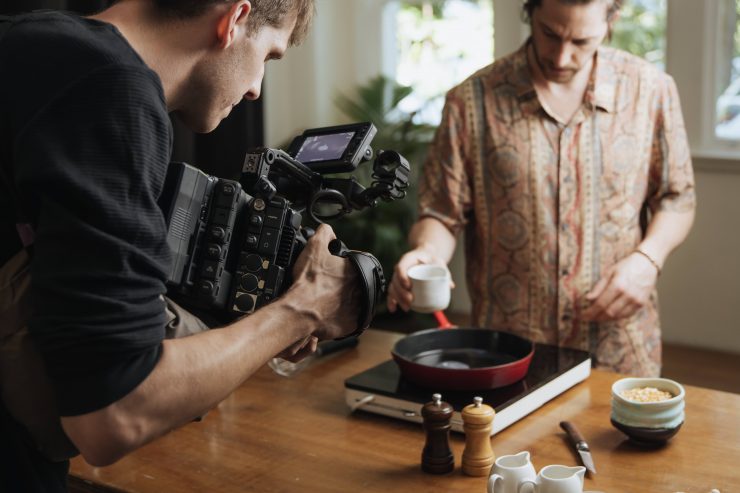
Canon is touting that the C300 Mark III can be used for a variety of applications including documentaries, TV programs, TV news, and corporate videos. It isn’t that this camera can’t be used for higher-end productions, but they are trying to push the C500 Mark II as a camera that is more suitable for that.
LCD & Viewfinder
The C500 Mark II utilizes the same 4″ LCD Monitor touchscreen (LM-V2) that is compatible with the Canon C500 Mark II.
There is also an optional removable rear camcorder style viewfinder that costs $699 USD.
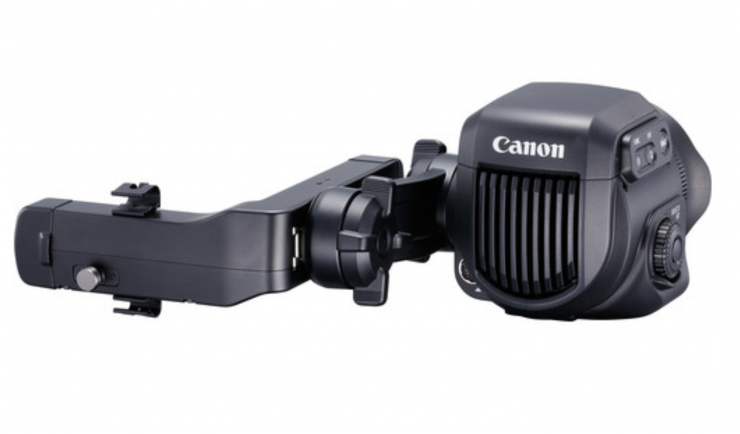
If you want to, you can also attach Canon’s $3,999 USD EVF-V70 OLED Viewfinder.
Resolution, Codecs & Frame Rates
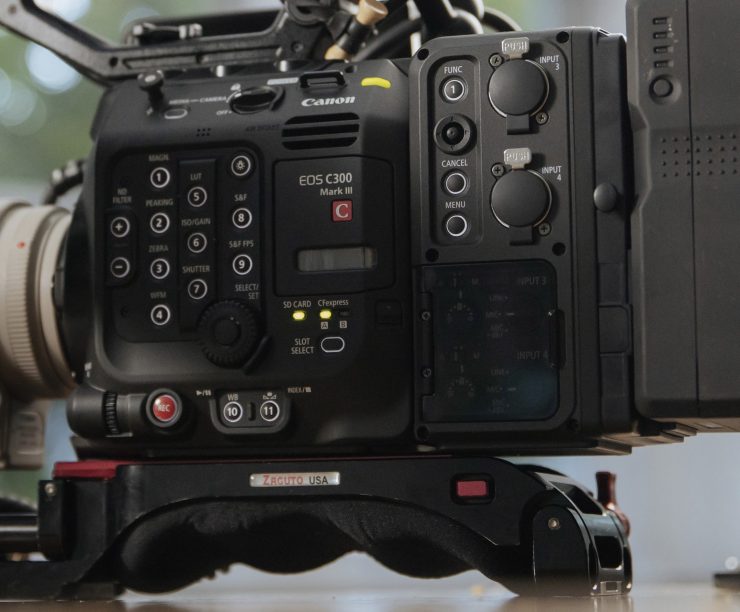
The EOS C300 Mark III camera offers a variety of options in terms of onboard recording while simultaneously supporting external uncompressed recording.
The C300 Mark III can record 4K at up to 120p in Canon RAW Lite or XAVC Intra. It does this without any cropping of the sensor.
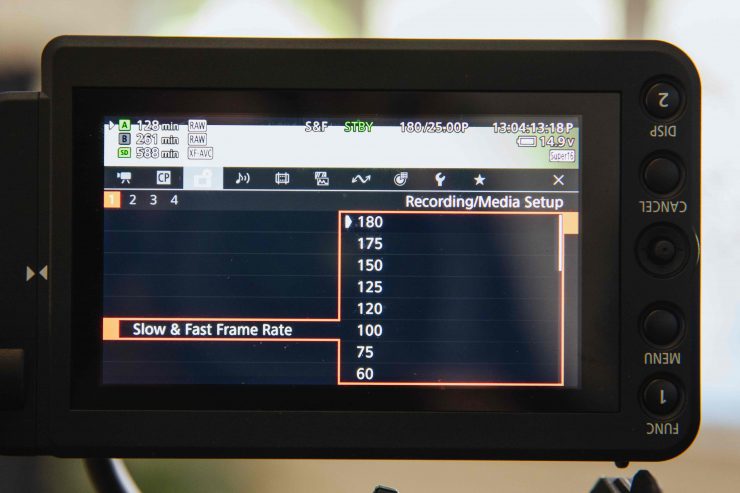
The camera can also shoot in 2K or HD at up to 180fps. At frame rates above 120, it will do a crop on the sensor and you need to be in the Super 16mm mode.
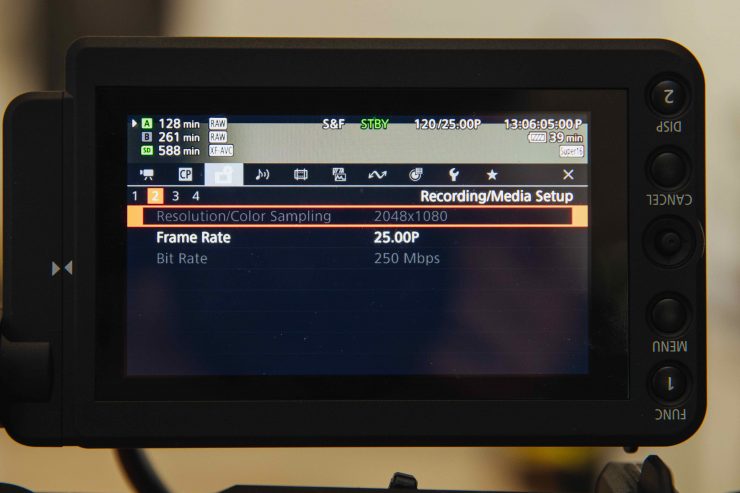
When a Super 16mm lens, or a 2/3-inch broadcast lens (with the B4 mount adapters – MO-4E for EF-mount /MO-4P for PL-mount) are used on EOS C300 Mark III the camera is set to formulate a choice between 2K or HD video formats.
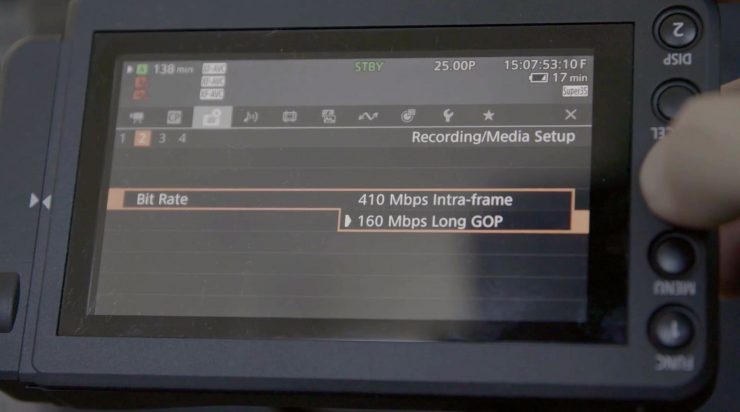
Something the C300 Mark III can do that the C500 Mark II can’t is XF-AVC Long GOP 4:2:2 10-bit recording. The C500 Mark II can only record XF-AVC Long GOP proxies.
XF-AVC Long GOP 4:2:2 10-bit recording is useful for TV news and applications where you don’t require large file sizes.
On-Board Recording
- 4K Cinema RAW Light, and 2K Cinema RAW Light
- 4K DCI or 4K UHD digital production formats with XF-AVC Intra codec
- 2K DCI or 1080-line HD digital production formats with XF-AVC Intra
- 4K/UHD/2K/HD Long GOP 4:2:2 10-bit recording
- Proxy video recording using XF-AVC LongGOP
| Cinema RAW Light 10-Bit, 12-Bit | |
| 4K (4096 x 2160) S35 | 23.98/24/25/29.97/50/59.94 S&F Mode: 61-120fps* |
| 2K (2048×1080) Super 16mm Crop | 23.98/24/25/29.97/50/59.94 S&F Mode: 113 – 180fps* |
*Frame rates above 59.94 can only be recorded in Cinema RAW Light 10-bit
The bitrate figure in brackets indicates the maximum bit rate at the highest resolution and frame rate.
| XF-AVC 4:2:2 10-Bit | |
| 4K (4096 x 2160) | 23.98/24/25/29.97/50/59.94 S&F Mode: 61-120fps |
| UHD (3840 x 2160) | 23.98/24/25/29.97/50/59.94 S&F Mode: 61-120fps |
| 2K (2048×1080) | 23.98/24/25/29.97/50/59.94 S&F Mode: 113 – 180fps* |
| HD (1920×1080) | 23.98/24/25/29.97/50/59.94 S&F Mode: 113 – 180fps* |
*180fps uses a cropped part of the sensor and it can only be done when in the Super 16mm mode.
| XF-AVC (Long GOP) | |
| 4K (4096 x 2160) | 23.98/24/25/29.97/50/59.94 S&F Mode: 61-120fps |
| UHD (3840 x 2160) | 23.98/24/25/29.97/50/59.94 S&F Mode: 61-120fps |
| 2K (2048×1080) | 23.98/24/25/29.97/50/59.94 S&F Mode: 113-180fps |
| HD (1920×1080) | 23.98/24/25/29.97/50/59.94 S&F Mode: 113-180fps |
If you want to see all the frame rates, data rates, etc. you can download the file above.
The addition of Canon’s Cinema RAW Lite to the EOS C300 Mark II is no real surprise. First introduced in the EOS C200 and then implemented into the C500 mark II, Cinema RAW Lite is a proprietary Canon RAW format. The good news is most NLE’s can read it with plugins.
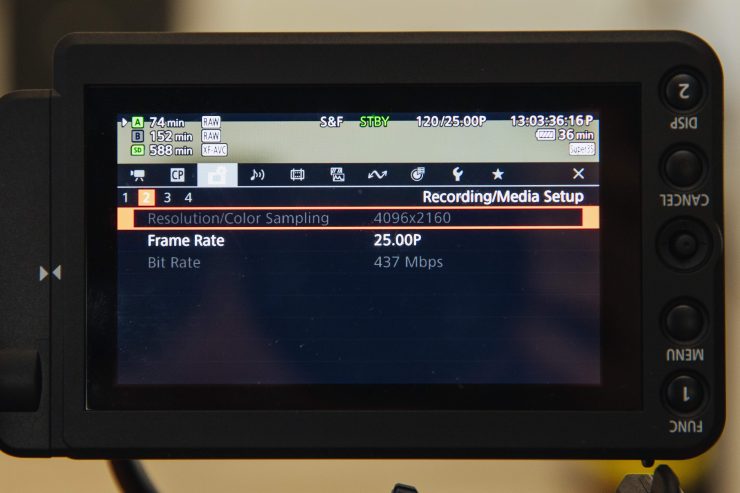
While the file sizes and recording times may seem overwhelming to someone who isn’t used to shooting RAW, they are actually pretty small compared to most other digital cinema camera RAW formats. The Cinema RAW Light files are about a 1/3 to 1/5 the size of Canon’s Cinema RAW format that had to be recorded externally from the EOS C300 Mark II and EOS C700. The benefit of having these smaller RAW files is that they can be recorded internally to the CFexpress cards.
Canon’s Cinema RAW Light isn’t uncompressed, but the files still contain more than enough information to give you very clean images, good color accuracy and a smaller chance of seeing any image artefacts. Unlike traditional RAW recording, Cinema RAW Light does not record in a frame-by-frame file structure. Instead, the RAW information is compiled into a single Canon RAW Movie file (.CRM).
The integrity of the RAW signal is protected by eliminating video processes like the Linear Matrix that selects the color gamut, and employing a special RAW OETF that optimizes the digital coding over the entire transfer curve for all ISO settings
When you are recording in RAW to the CFexpress cards you can also record proxy files to an SD card.
In the case of external recording either the 12G-SD, I or the HDMI interface may be used. When recording 4K onboard using the XF-AVC Intra codec an uncompressed 4K or 2K version can be externally recorded. Conversely, if recording 2K onboard then only a 2K uncompressed version can be externally recorded. When recording HDR onboard either that same HDR or the derived SDR may be externally recorded. If SDR is being recorded onboard only that same SDR can be externally recorded.
Recording Times
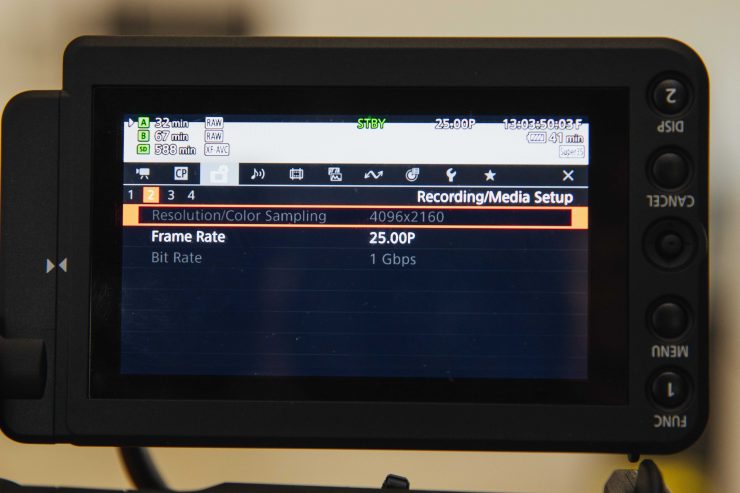
How long can you record for in the various resolution, frame rates, and codecs? Well, let’s have a look:
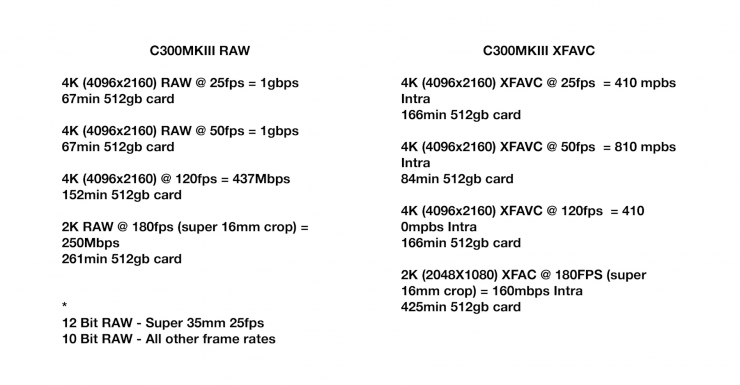
Cinema RAW Light
12 BIT RAW – 23.98, 24, 25, 29.98p
10 BIT Raw – all other frame rates
4K (4096×2160) RAW @ 25fps = 1gbps
67min 512GB card
4K (4096×2160) RAW @ 50fps = 1gbps
67min 512GB card
4K (4096×2160) @ 120fps = 437Mbps
152min 512GB card
2K RAW (2048×1080) @ 180fps (super 16mm crop) = 250Mbps
261min 512GB card
XF-AVC 4:2:2 10-Bit
4K (4096×2160) XFAVC @ 25fps = 410 Mbps Intra
166min 512GB card
4K (4096×2160) XFAVC @ 50fps = 810 Mbps Intra
84min 512GB card
4K (4096×2160) XFAVC @ 120fps = 410 Mbps Intra
166min 512GB card
2K (2048×1080) XFAC @ 180FPS (super 16mm crop) = 160mbps Intra
425min 512GB card
User swappable mounts
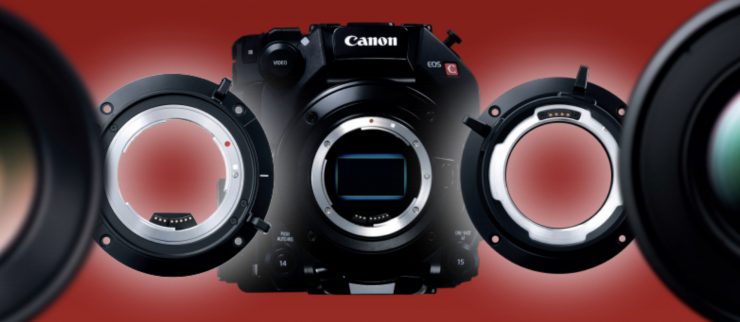
The C300 Mark II has a user-changeable lockable Canon EF mount that can be changed over to PL or standard EF.
Users can change the lens mount themselves without assistance from a Canon service center. If you own a C500 Mark II you could swap over mounts between that camera and the C300 mark III.
The EF mount comes standard, the PL mount is $1,600 USD. The EF mount has been a staple of the Cinema EOS ecosystem, but you have to wonder why they didn’t decide to go with the newer RF mount.
Only four M3 screws are required to implement the change out to the alternative mounts. Selections from the included shim sets can be added for precision adjustment of the flange back
No RF Mount
You may be asking why doesn’t the C300 Mark III have an RF mount? That is a good question. Considering the RF lenses that are now available and the ability to adapt not only Canon EF, but a wide range of other mounts it is puzzling to say the least.
If I was to guess as to why it doesn’t have an RF mount it would be that Canon engineers may be having issues trying to fit an internal ND system with the RF mount. This is the only logical explanation.
Yes, it does support anamorphic shooting
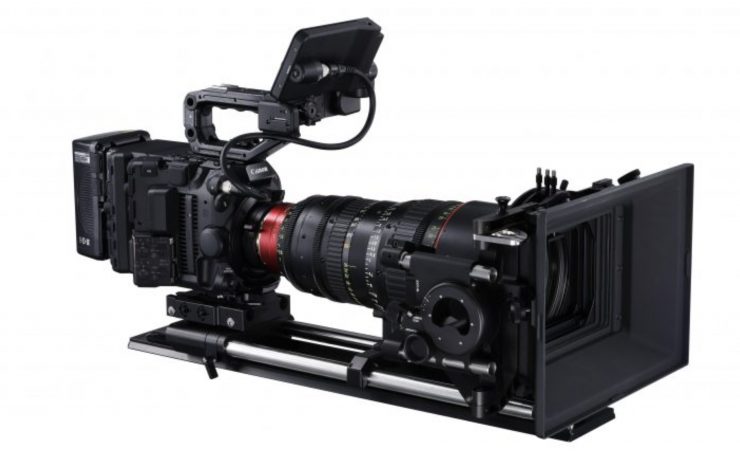
The camera can shoot with Anamorphic lenses and will offer a monitored de-squeeze for 2x and 1.3x lenses.
Like the C500 Mark II, the image is still recorded squeezed and the final de-squeeze happens in post.
Dual Pixel CMOS AF
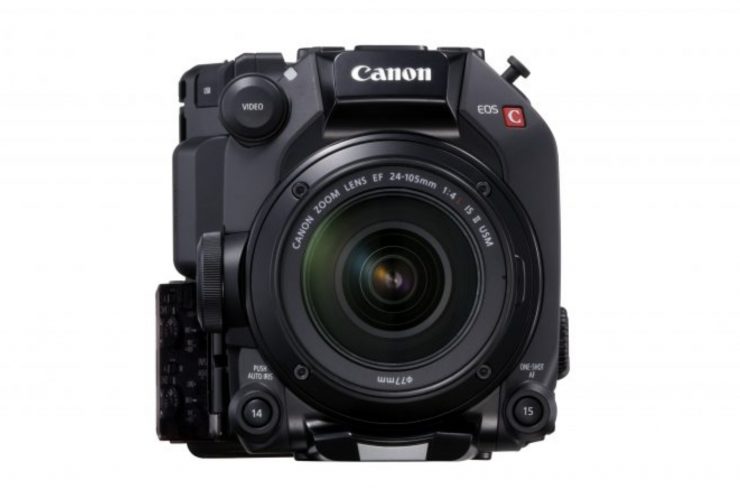
The EOS C300 Mark III uses the same exact Dual Pixel CMOS AF (DAF) Technology that is found in the C500 mark II. Each pixel in the camera’s CMOS sensor is configured with two photodiodes.
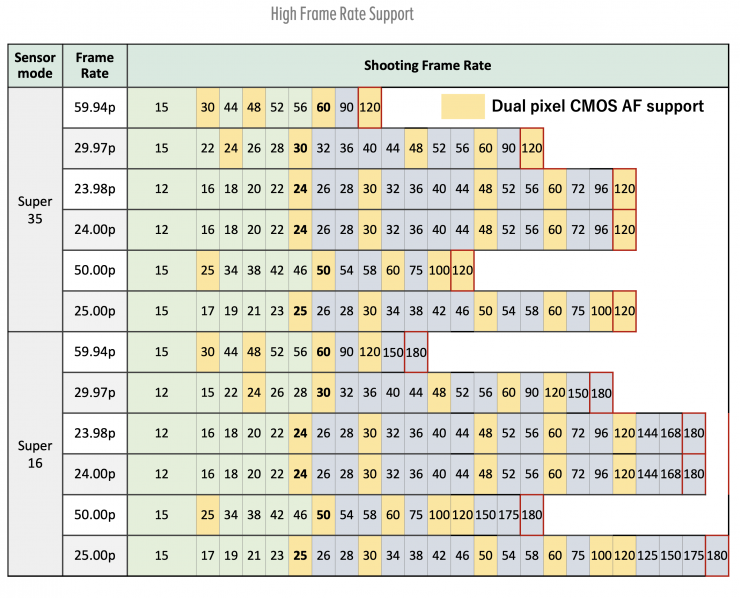
Where it differs from the C500 Mark II is that DPAF is available in far more frame rates. On the C500 Mark II the DPAF stops working once you go into the S&F mode. As you can see from the above chart, DPAF support works with the C300 Mark III in most frame rates, but if you are shooting in S&F, some shooting frame rates are not supported.
Now, one thing to note though, on the C300 Mark III Face detection only works up to 60p. it does not work in any S&F setting. That means you can’t use it if for example if you were shooting a 23.98p base and wanted to shoot at 60fps. It will only work if you shoot in 23.98, 24, 25, 29.97, 50 or 60p.
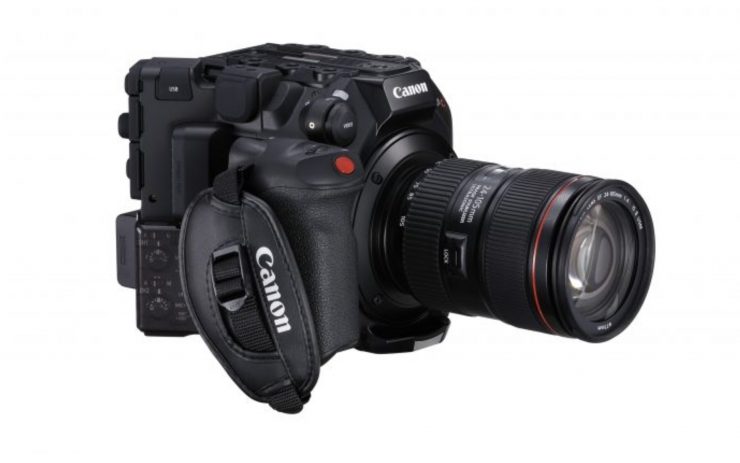
How does DPAF work? Two independent image signals can then be detected at each photosite. By implementing phase-difference AF, smooth focusing is accomplished using Canon EF lenses with much higher speed and accuracy than was possible with previous technologies.
The C300 Mark III has rapid one-touch AF (with a push-button) and continuous AF within approximately 80% of the overall image area. Face detection AF is another autofocus mode that can track a person’s face in the frame and maintain focus on them. To further fine-tune AF performance, the camera has the ability to set the AF tracking speed and response.
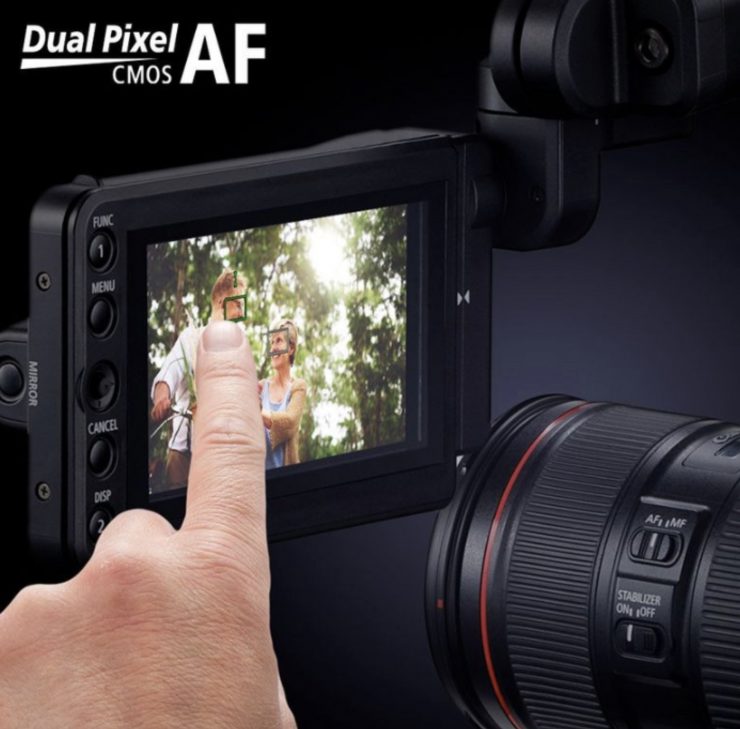
DPAF also allows you to use the Dual Pixel Focus Guide. The Dual Pixel Focus Guide presents the user with a rectangle in the center of the EVF or monitor. The rectangle turns green when the subject is in focus. If the subject is out of focus the box will turn grey and the arrows will indicate which way to adjust the lens to regain focus.
A focus pre-set feature allows separate predetermined focus points to be selected, and when the SET button is pushed, the lens will move the focus from one mark to the other.
Electronic Image Stabilization (EIS)
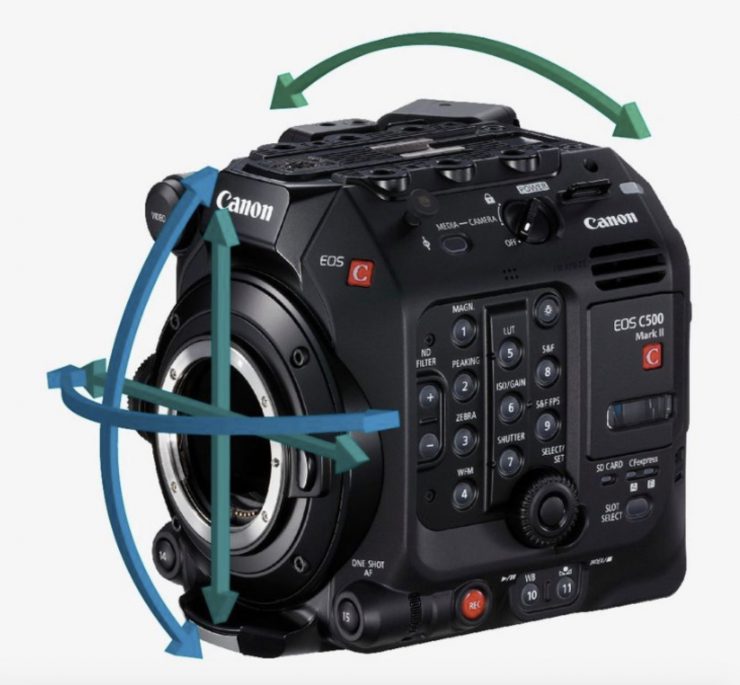
Just like the C500 Mark II, the C300 Mark III features Electronic Image Stabilization (EIS). According to Canon, it is similar to the system used on the EOS R but more advanced. The system provides five-axis correction when coupled to a lens that has no internal image stabilization When operating with a lens that does have internal IS, the lens manages the Yaw and Pitch compensation while the camera deals with the Roll and Horizontal/Vertical (X/Y) movements. Central to the EIS system is the creation of an active image frame that is smaller than the sensor itself. The essence of the correction strategy is to move that frame under software control in a manner that counters the image shift created by the external vibrations and restores the image to its central position.
A gyroscopic sensor mounted within the body of the camera reports on angular rates along reference axes. This data is reported to the Digic DV7 processor that make high-speed calculations that in turn create the appropriate instruction to reposition the selected active image area.
The EIS system only operates when recording in XF-AVC or XAVC Long GOP– it does not function when recording CinemaRAW Light.
EIS should not be confused with IBIS, they are not the same.
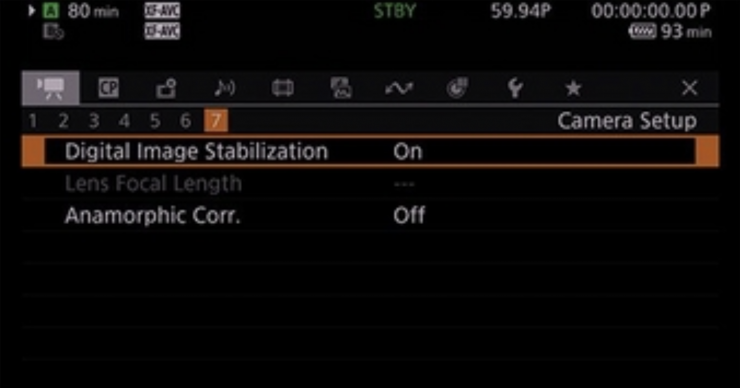
Automatically obtains focal length
When a lens that supports data transmission is attached, focal length data is automatically received through the digital contacts for shooting with optimized Electronic IS.
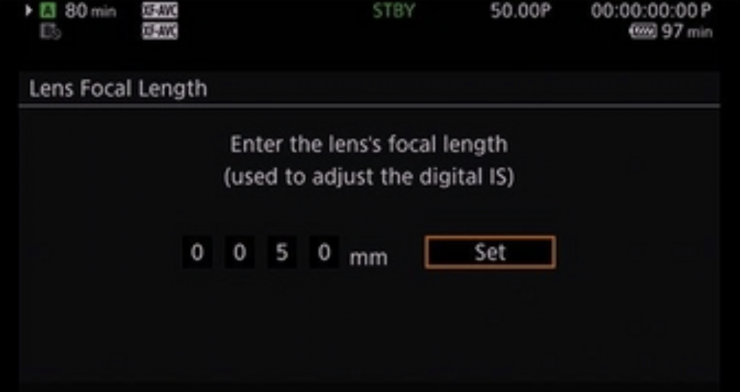
Electronic IS with non-electrical contact lenses
Shooting with Electronic IS is possible even when a lens that does not support data transmission is attached by simply manually inputting the focal length. It is also compatible with anamorphic lenses.
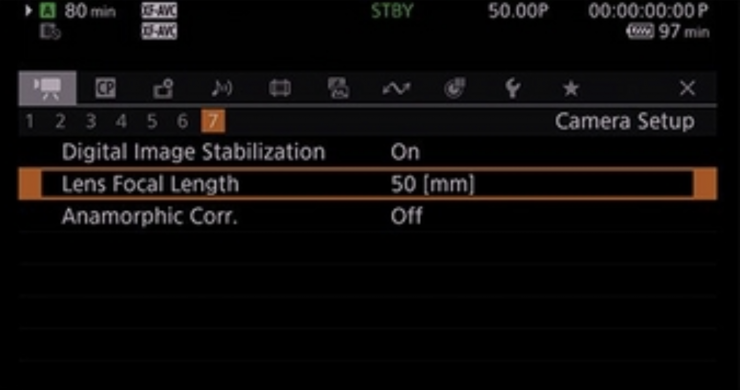
Focal Length can be saved
You can select the focal length during shooting to optimize the electronic IS effect.
This system should certainly benefit anyone shooting handheld, especially with longer focal length lenses. The 5-axis stabilization also works in conjunction with Canon EF mount lenses that have stabilization. As they work together you don’t have to choose one or the other.
Diffraction Correction System
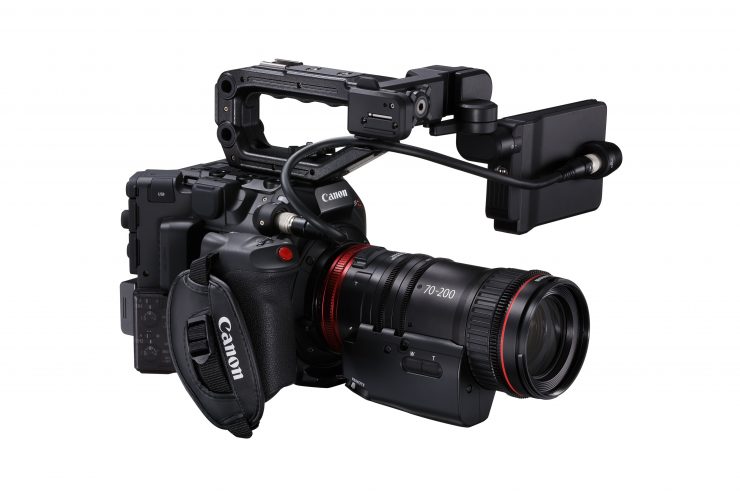
Again, just like the C500 Mark II, the C300 Mark III has a built-in Diffraction Correction System.
There are two inescapable optical limitations to the sharpness of the video image that are originated in any lens-camera system. One is in the lens itself (the optical phenomenon of diffraction) that sees a progressive lowering of optical MTF as the lens aperture is stopped down. The second is the roll-off in the optical-filtering that must be deployed to counter the aliasing associated with the image sensor sampling.
The Diffraction Correction system within the EOS C300 mark III camera processor implements real-time compensation for diffraction and for the optical pre-filtering. A correction circuit under control of a recovery filter database within the DIGIC DV7 implements this compensation. The design of that database is based upon an assessment of the textural image deterioration as the light passes through the lens aperture followed by the camera pre-filtering. That entailed an analysis of the behavior of the point spread function of light beams passing through that system which was converted into a mathematical function, termed the optical transfer functions (OTF). This modelling incorporates the alterations to the point spread function as the lens aperture ranges from fully open to fully closed. An inverse function was then created and this forms the basis of the recovery filter database that would control the correction circuit (in realtime as the lens aperture is operated) to return the video image quality to close to the state associated with the wide-open aperture setting.
Diffraction correction is not a traditional video sharpening process, but rather it is a restoration based upon reported predictability. It manifests itself by restoring a good deal of the subtle image textural information that is lost by diffraction and pre-filtering
Diffraction correction does not operate on RAW video
Media
The C300 Mark III features dual CFexpress card slots as well as an SD card slot which you can use to record low-resolution proxies.
When recording proxies you can do so in:
2048 X 1080: 50.00P/60.00P, YCC 4:2:0 8-bit 35 Mbps/24.00P/25.00P,
YCC 4:2:0 8-bit 24 Mbps Long GOP
Canon LOG
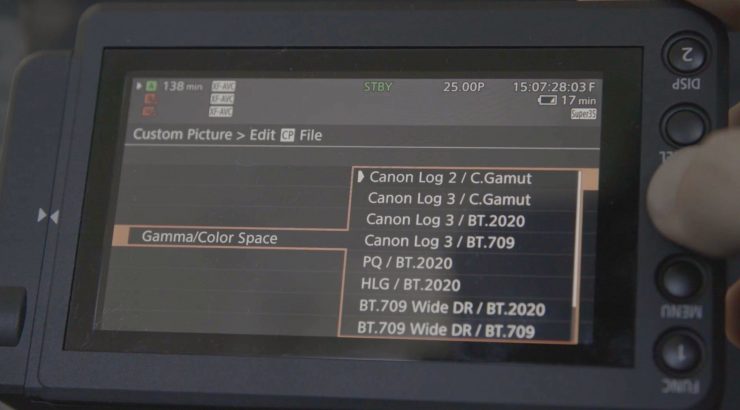
Just like the C500 Mark II, the C300 Mark III can shoot in Canon Log 2, Canon Log 3, HDR-HLG, HDR-PQ, Normal 1, and Wide DR.
LUTs
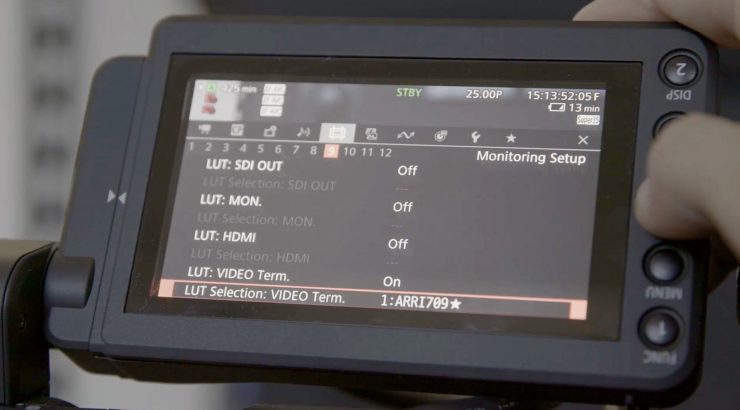
Preset Viewing LUTs can be assigned for each output. Relevant outputs are MON., HDMI, SDI OUT, and VIDEO terminal/EVF-V50.
User LUTs can also be created in software such as DaVinci Resolve, and then loaded via an SD card and separately stored.
Interfaces
This is what the C300 mark III comes with:
- 1 x BNC (12G-SDI) Output
- 1 x BNC (3G-SDI) Monitor Output
- 1 x HDMI Output
- 1 x 1/8″ / 3.5 mm Stereo Mic Level Input
- 2 x 3-Pin XLR Mic/Line Level Input
- 1 x 1/8″ / 3.5 mm Stereo Mic Level Input
- 1 x 1/8″ / 3.5 mm Stereo Headphone Output
- 1 x BNC Timecode Input/Output
Modules
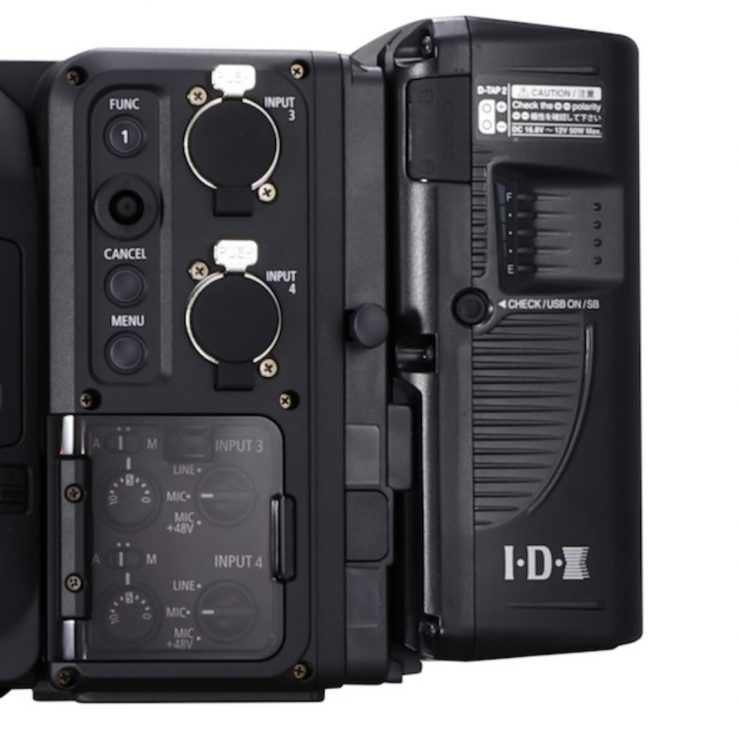
You can, of course, use the same EU-V1 Expansion Unit 1 or EU-V2 Expansion Unit 2 that are available for the C500 Mark II.
Both modules interface with the camera body via a three-pin Fisher connection point.
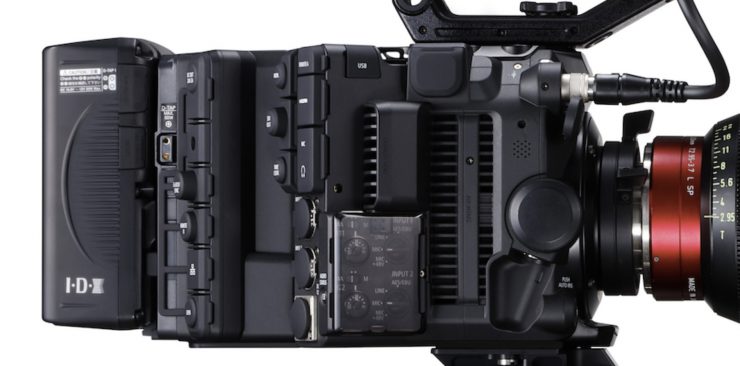
The EU-V2 (Expansion Unit) costs $1,600 USD. It features a V-lock or AB battery plate and gives you two additional audio inputs (more on the audio later). This enables you to record four separate audio tracks.
The module also adds additional SDI ports and power outputs.
The Extension Unit 1 (EVU-1) $499 USD, offers multi-camera support with a Genlock interface, while Extension Unit 2 adds further interfaces, such as two more XLR inputs, ideal for broadcast applications and a V-Lock battery mount for extended recording times. The optional EVF Unit is ideal for hand-held use but also answers user’s demands to make it easily removable for gimbal applications.
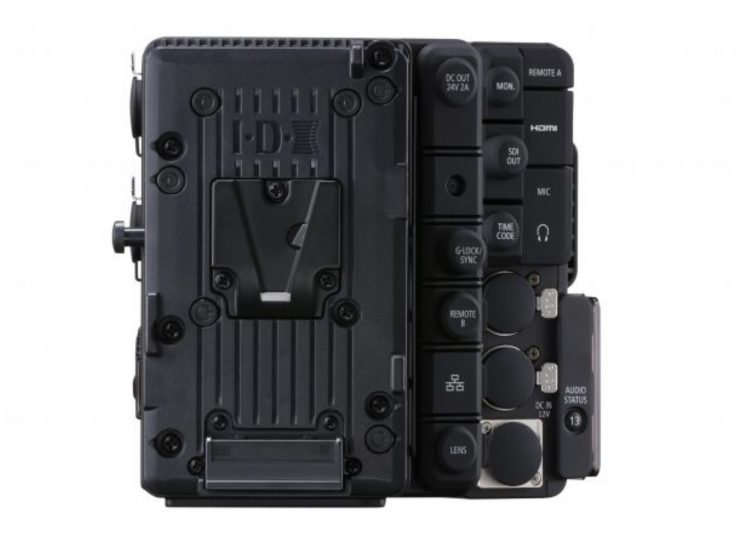
By adding a V-lock or AB battery on the back of the module, this will not only allow the EOS C300 mark III to have longer run times, but it should also help with better weight distribution if you want to shoulder mount the camera.
With the modules attached you do have to remove the rear viewfinder, so that will force you to use the LCD touchscreen, or an external EVF or monitor.
Audio
Just like with the C500 Mark II, Canon has put the audio controls for the C300 mark III on the right-hand side of the camera.
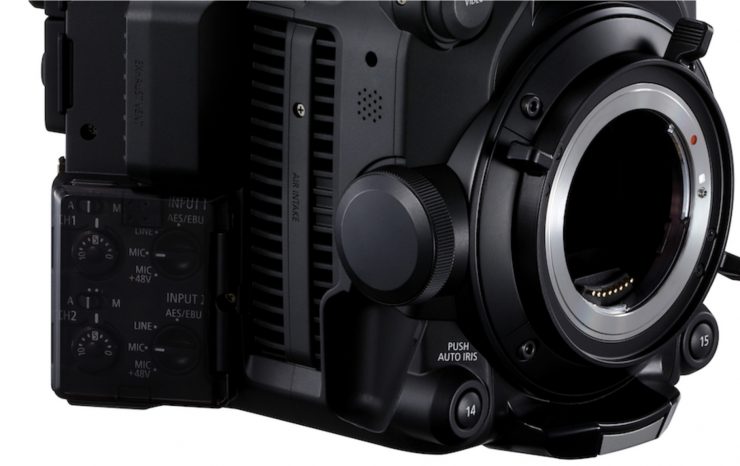
Now there is a reason why they have had to do this. Because the media recording slots are on the side of the camera and not at the back there is no room to put them on the operator’s side of the camera. Well, why not put them on the back of the camera? Well, that isn’t possible, because that is where the optional module has to go.
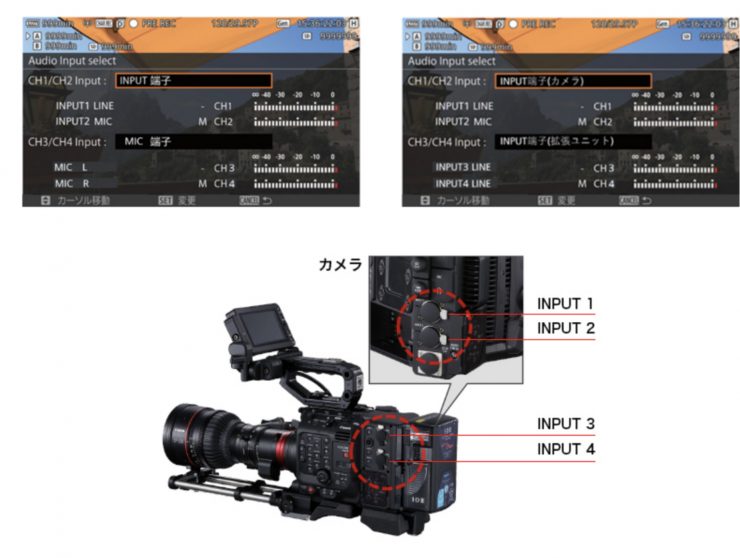
It’s almost as if Canon is forcing you to go with the optional module so that you can control audio from the operator’s side. But if you do want to control the audio on the operator’s side you will need to have your audio plugged into input 3 or 4. What you also have to take into account is that if you use the XLR inputs on the module, whatever you plug in is going to be sticking straight out (unless you have angled connectors). This could be a potential usability problem if you are shoulder mounting the camera.
Price & Availability
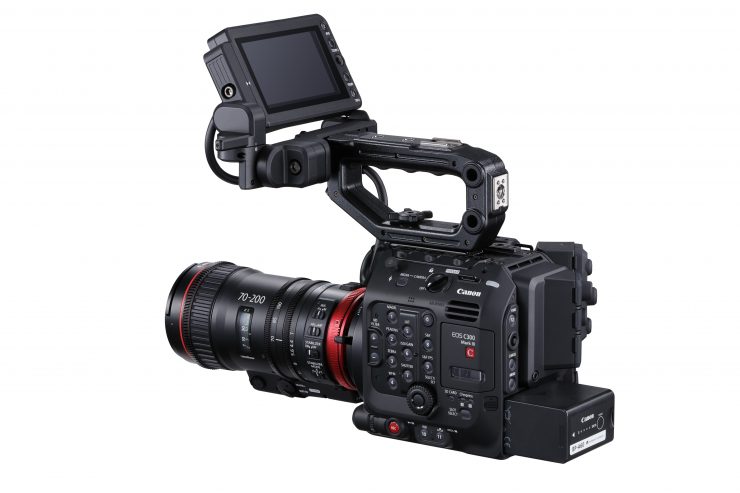
The Canon EOS C300 Mark III Cinema Camera is scheduled to be available sometime in June or July for an estimated retail price of $10,999 USD.
That makes it $5,000 USD cheaper than the C500 Mark II and $1 more than the Sony FX9.
So does that price compare to other digital cinema cameras? Below is what similar competing cameras retail for:
| PRICE | |
| Canon C300 Mark III | $10,999 USD |
| Canon C300 Mark II | $8,999 USD |
| Sony FX9 | $10,998 USD |
| Sony FS7 MK2 | $8,998 USD |
| Panasonic Varicam LT | $9,995 USD |
| Pansonic EVA1 | $6,495 USD |
| Blackmagic URSA Mini Pro G2 | $5,995 USD |
| Kinefinity MAVO 6K | $4,999 USD |
| Kinefinity MAVO LF | $7,999 USD |
| Z CAM E2-F6 | $4,995 USD |
| Z CAM E2-S6 Super 35 6K Cinema | $2,995 USD |
| Z CAM E2-F8 Full-Frame 8K Cinema Camera | $5,995 USD |
As you can see it is at the upper end of the mid-tier digital cinema camera pricing spectrum, but it is still competitively priced against the Sony FX9 and Panasonic Varicam LT.
Late to the party?
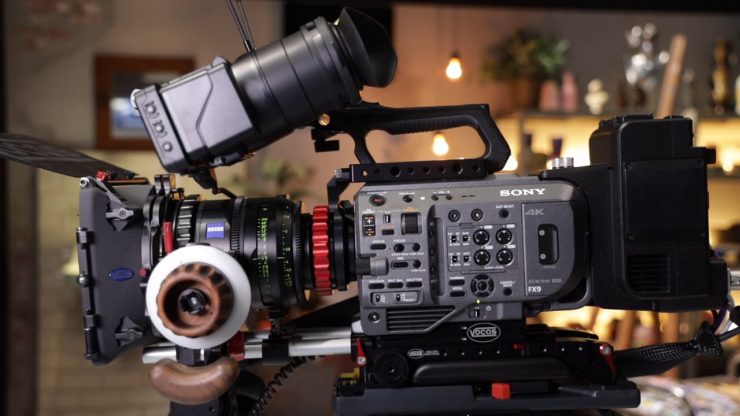
The only slight concern I have with the C300 Mark III is it is late to the party. Canon probably should have released this camera at the same time as the C500 Mark II. In my opinion, the C300 Mark III is more in direct competition with the Sony FX9 than the C500 Mark II. Yes, it isn’t full-frame like the FX9, but the pricing is similar and the C300’s direct competitor has always been the Sony FX series.
The FX9 is already available and it is attracting a lot of attention from FS7 owners and users. A lot of C300 Mark II users jumped to the C500 Mark III without knowing a C300 Mark III would follow soon after.
Hypothetically speaking, if Canon had never released the C500 Mark II and instead just made a full-frame C300 Mark III with 4K 120p recording and a Dual Gain Output for under $12,000 USD they would have created a camera that everyone would have jumped on.
Third time’s a charm
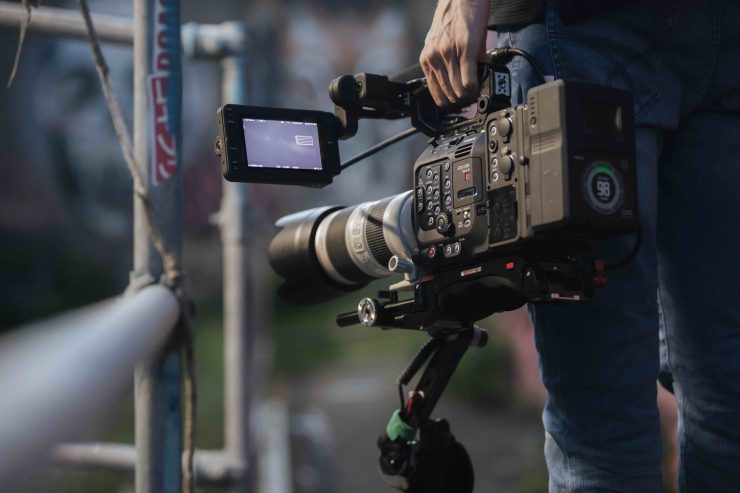
It is no real surprise that we are seeing a Canon C300 Mark III. It has been more than 4 ½ years since Canon announced the C300 Mark II, and that’s a long long wait with how fast technology has been moving.
Let’s face it, although not a bad camera, the C300 Mark II was underwhelming in a lot of ways. It was still reasonably popular, but nowhere near as popular as the competing Sony FS7 and FS7 Mark II. It was also overpriced at launch and cost almost twice that of a Sony FS7.
To me, the C300 Mark III represents a re-birth in some ways of the original C300. I was personally disappointed with the C300 Mark II and thought that the images when recording in 4K looked soft. The Mark III, at least on paper, looks to be a massive improvement on the Mark II and it sends a clear signal that Canon is back in the game.
Where does the EOS C300 Mark II exactly sit?
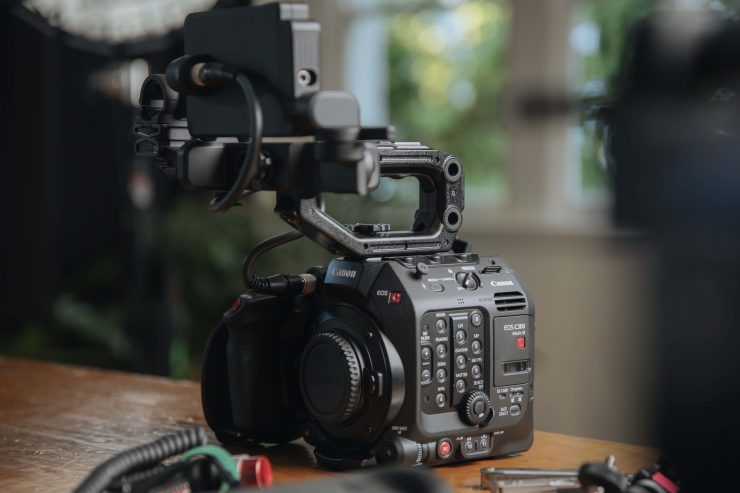
The C300 Mark III sits between the C200 and the C500 Mark II. The C300 Mark III is priced to compete directly against Sony’s FX9.
How does it compare against the FX9?

Even though the Sony FX9 has full-frame sensor, it can only record in resolutions up to 4K, and it is priced at a similar amount to the C300 Mark II. The C300 Mark III has better internal recording options and higher frame rates, as well as the ability to internally record RAW.
Here is how the two cameras compare:
| CANON C300 MARK III | SONY FX9 | |
| Sensor | S35 Dual Gain Output CMOS sensor Super 35mm 4K Dual Gain Output CMOS sensor (9.6 MP) 4206 x 2280 | Full Frame 35.7 x 18.8 mm CMOS Sensor Dual Base ISO |
| Dynamic Range (claimed) | 16+ stops | 15 stops |
| RAW Recording Resolutions & Frame Rates | Cinema RAW Lite 4K (4096 x 2160) 23.98/24/25/29.97/50/ 59.94/100/119.98 2K (2049 x 1080) 23.98/24/25/29.97/50/ 59.94/100/119.98 | External 16-bit raw 4K/2K up to 120 fps to a compatible device* |
| Recording Resolutions & Frame Rates | XF-AVC 4:2:2 10-bit 4K (4096 x 2160) 23.98/24/25/29.97/50/ 59.94/100/119.98 UHD (3840 x 2160) 23.98/24/25/29.97/50/ 59.94/100/119.98 2K 2049 x 1080) 23.98/24/25/29.97/50/ 59.94/100/119.98/180 HD (1920 x 1080) 23.98/24/25/29.97/50/ 59.94/100/119.98/180 XF-AVC (Long GOP) 4K (4096 x 2160) 23.98/24/25/29.97/50/ 59.94/100/119.98 UHD (3840 x 2160) 23.98/24/25/29.97/50/ 59.94/100/119.98 2K 2049 x 1080) 23.98/24/25/29.97/50/ 59.94/100/119.98/180 HD (1920 x 1080) 23.98/24/25/29.97/50/ 59.94/100/119.98/180 XF-AVC (Long GOP) Proxy 4:2:0 8-bit 2K (2049 x 1080) 23.98/24/25/29.97/50/ 59.94/100/119.98/180 (35 Mbps) HD (1920 x 1080) 23.98/24/25/29.97/50/ 59.94/100/119.98/180 (24 Mbps) 1280 x 720 23.98/24/25/29.97/50/ 59.94/100/119.98/180 (17 Mbps) | XAVC-I 4:2:2 10-Bit UHD (3840 x 2160p) 23.98/25/29.97/50/59.94 fps HD 1920 x 1080p 23.98/25/29.97/50/59.94/100/120 XAVC-L 4:2:2 10-Bit UHD (3840 x 2160) 23.98/25/29.97/50/59.94 fps HD (1920 x 1080) 25/29.97/50/59.94/100/120 fps HD 1920 x 1080i at 50/59.94 fps (50 Mb/s) MPEG HD422 4:2:2 10-Bit HD (1920 x 1080) 23.98/25/29.97 fps (50 Mb/s) HD (1920 x 1080i) 25/50/59.94 fps (50 Mb/s) XAVC Proxy 4:2:0 10-Bit 1920 x 1080p (9 Mb/s) 1280 x 720p (6 to 9 Mb/s) 640 x 360p (3 Mb/s) HD at up to 180 fps* |
| Auto Focus | Dual Pixel CMOS AF | |
| Image Stabilization | EIS | Post stabilization |
| Lens Mount | Canon Locking EF PL and regular EF available | Sony E-mount |
| Internal ND | Electronically-controlled ND filter system, which supports 2/4/6 and an extended 8/10 stops | 4 to 128 Stop Electronic ND Filter |
| Power Draw | 31W | 35.2W |
| Timecode & Genlock | Timecode:Yes Genlock: Requires optional expansion unit | Yes |
*Not available yet
Both cameras have their strengths and weaknesses. The C300 Mark III offers high frame rates and internal RAW recording. The Sony FX9 offers a full-frame sensor and Electronic Variable ND.
Both cameras are priced similarly. The C300 Mark III will be $10,999 USD and the FX9 retails for $1 cheaper ($10,9998 USD).
The biggest advantage the Sony FX9 has is that it is already available. It could be quite a while before the C300 Mark II starts shipping.
Is Canon cannibalizing the C500 Mark II?
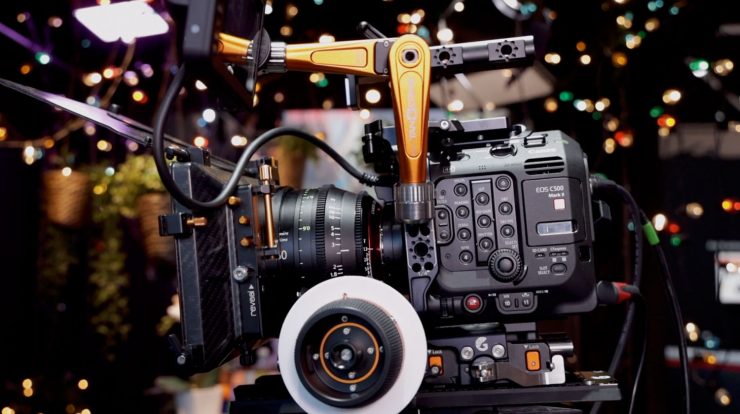
I wrote an article last year about the changing direction of the camera market, In that article, I wrote:
As Steve Jobs famously once said, “If you don’t cannibalize yourself, someone else will.” With companies such as Blackmagic, Z CAM, and Kinefinity disrupting the market, the big manufacturers need to start cannibalizing themselves if they want to stay relevant.
Just like the C500 Mark II cannibalized the C700 FF, the C300 Mark II cannibalizes the C500 Mark II.
Yes, it doesn’t have a full-frame sensor and it can’t record 5.7K RAW, but it does give you 4K at 120p in the exact same camera body with all of the same functionality.
If you bought a C500 Mark II, you may well be looking at the C300 Mark III and questioning your decision. In some ways, the C500 Mark II and the C300 Mark III are almost like Sony’s F55 and F5. Two cameras that share the same exact body, with a lot of the same functionality and feature set, separated by only a few key items.
Initial thoughts
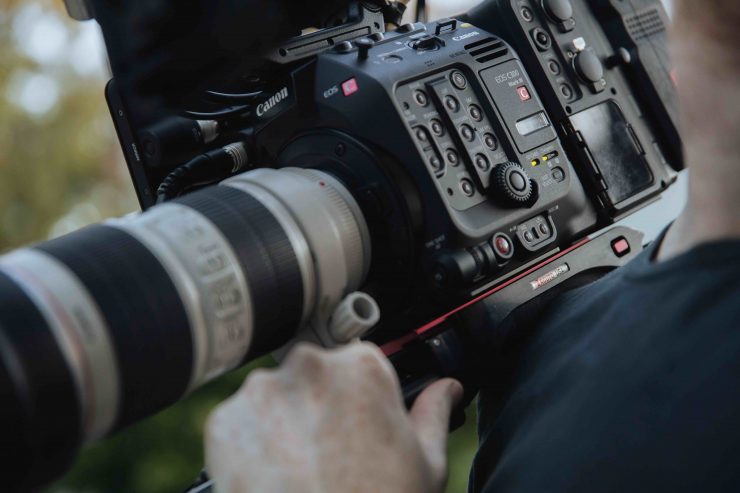
The days of Canon releasing cameras with underwhelming specifications and features seems to be a thing of the past.
I personally think that the C500 Mark II, C300 Mark III, and the EOS R5 are Canon’s most significant announcements since the original C300. The C300 was the first affordable digital cinema camera that could record in a broadcast quality codec. It was a hugely popular camera for Canon, but just about everything else they have done since has been a little lacklustre, to say the least. The EOS C500, EOS C300 Mark II, EOS C700 & EOS C700 FF were all met with mixed reactions, and all those models failed to gain any real traction in the market.
On paper, the C300 Mark III looks like a great camera and there is certainly a lot to like. For me, the most exciting aspect is not the 4K 120p, but the Dual Gain Output sensor. If you have just bought a C500 Mark II you may well be feeling a little jealous of the C300 Mark III.
Canon now has a well-featured camera that sits at a price point that is still obtainable for a lot of owner/operators.
What do you think about the C300 Mark III? Would you buy one? Join us and others in the newly launched Newsshooter Forums.
Like what we do and want to support Newsshooter? Consider becoming a Patreon supporter and help us to continue being the best source of news and reviews for professional tools for the independent filmmaker.

